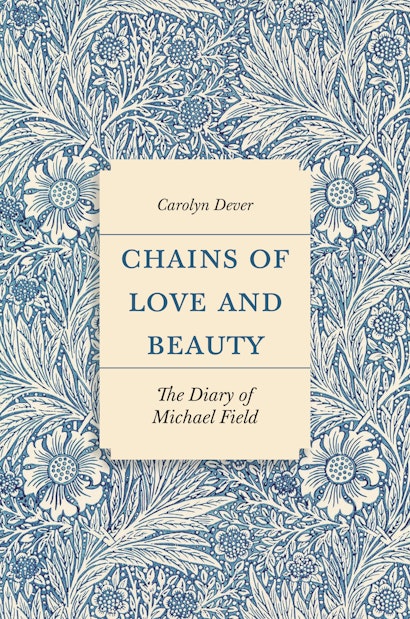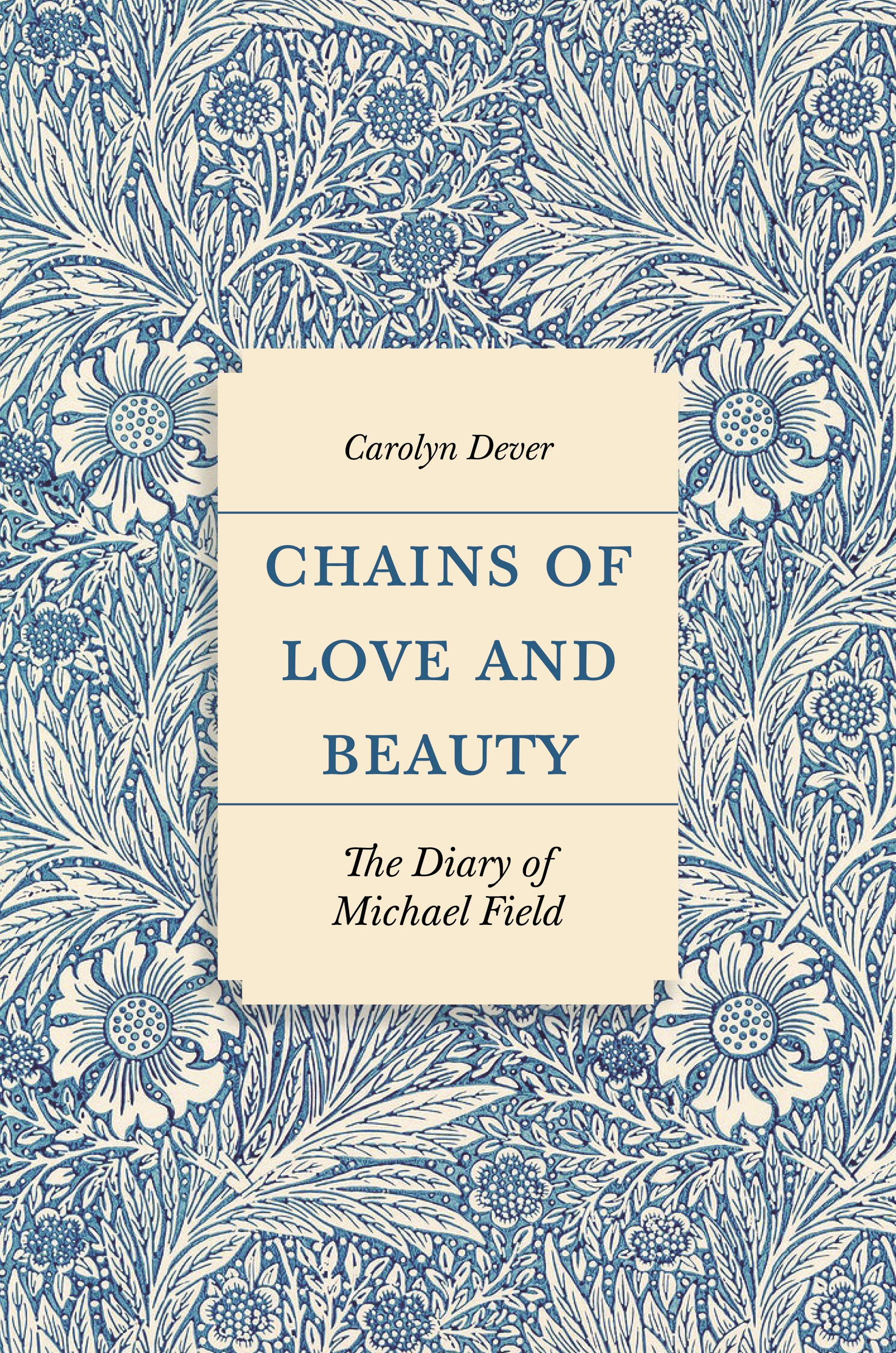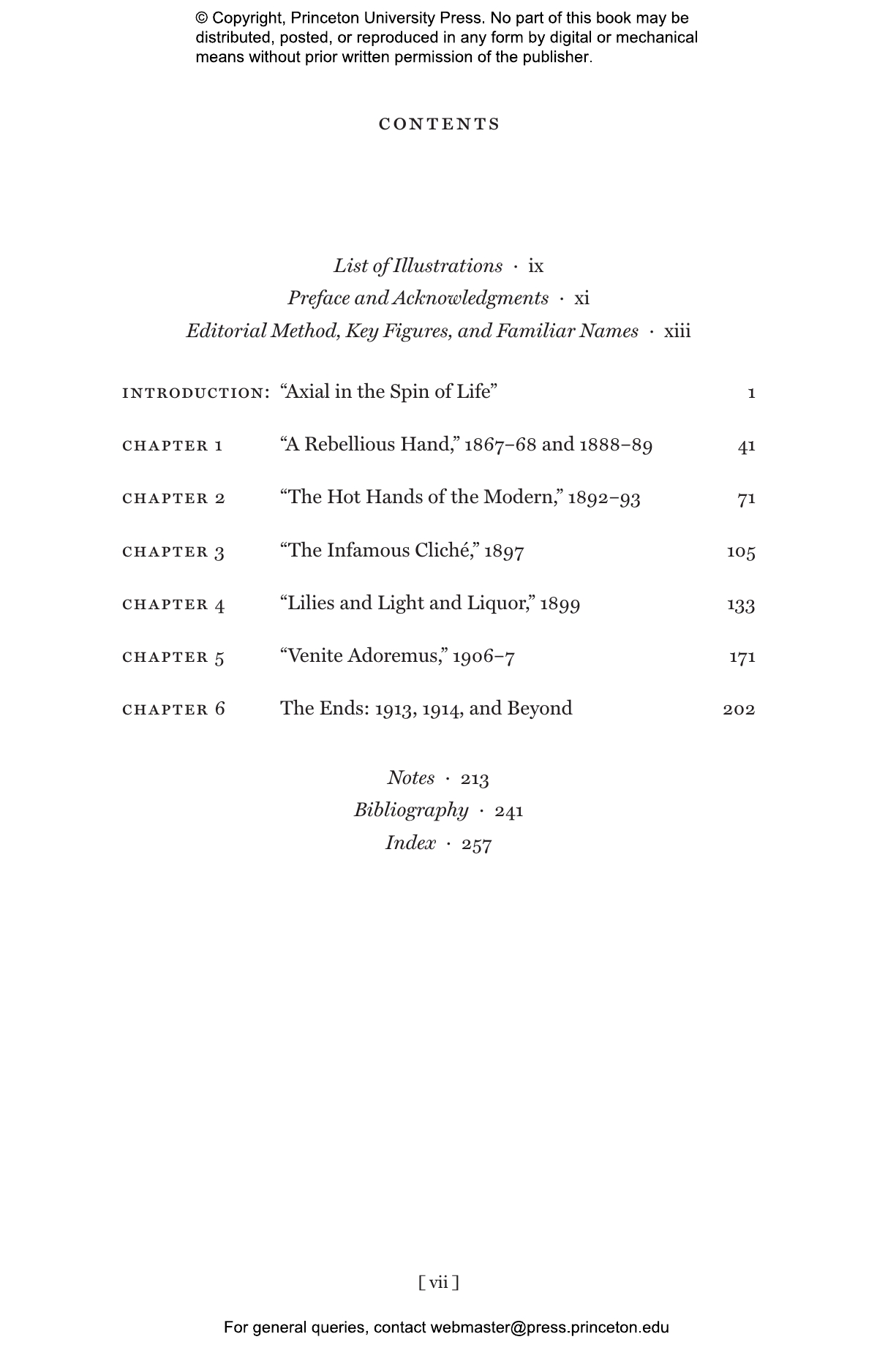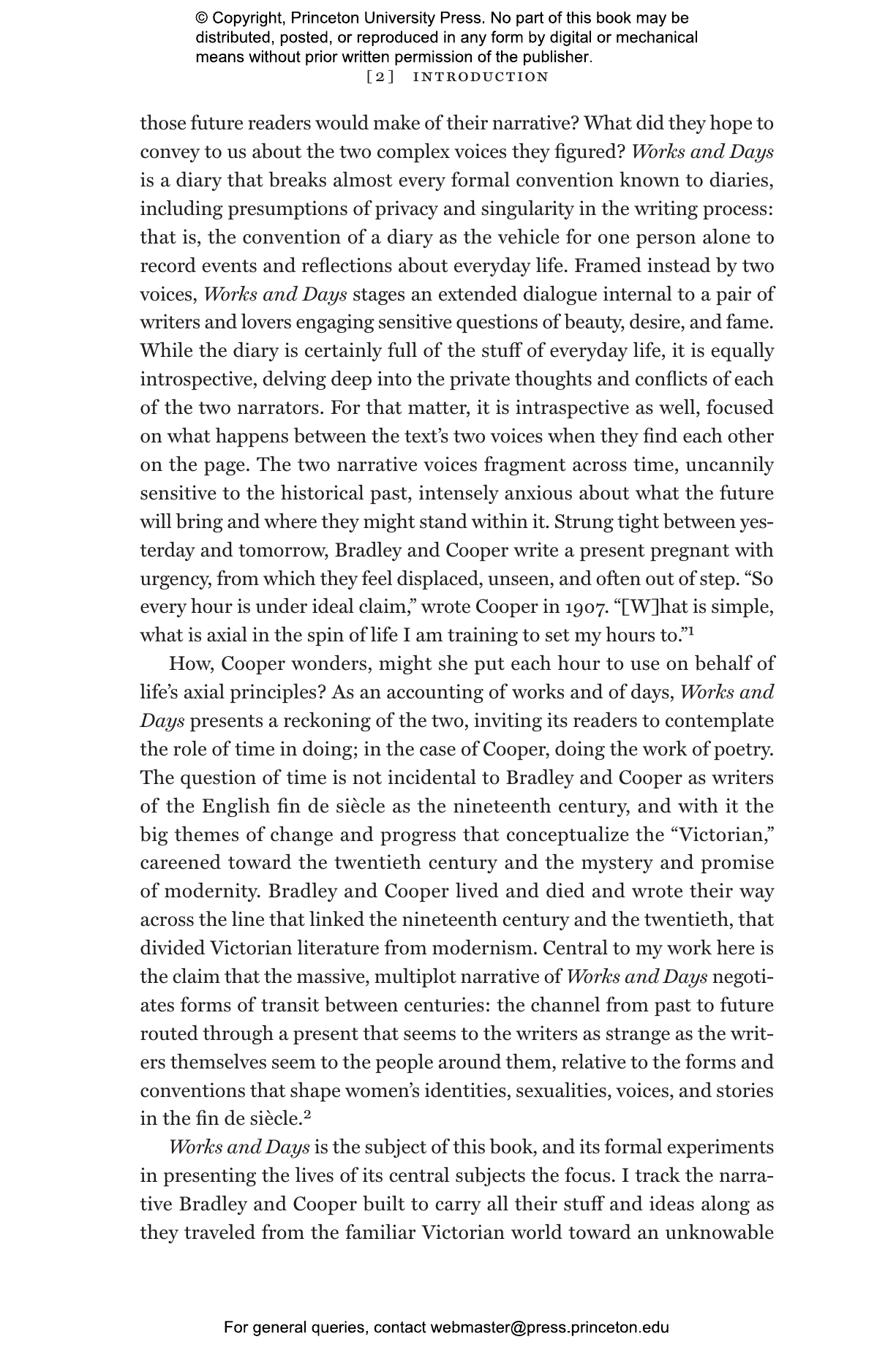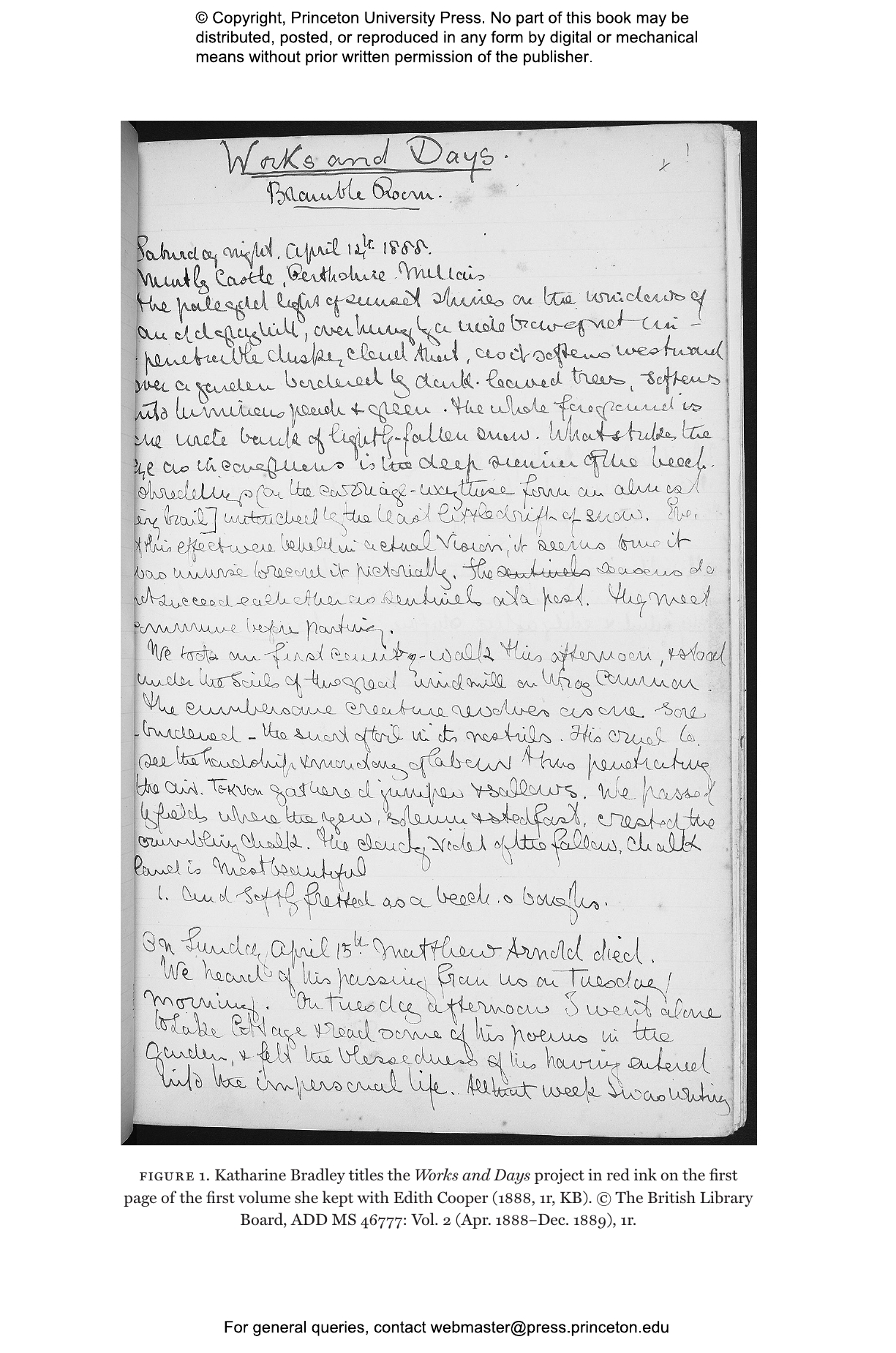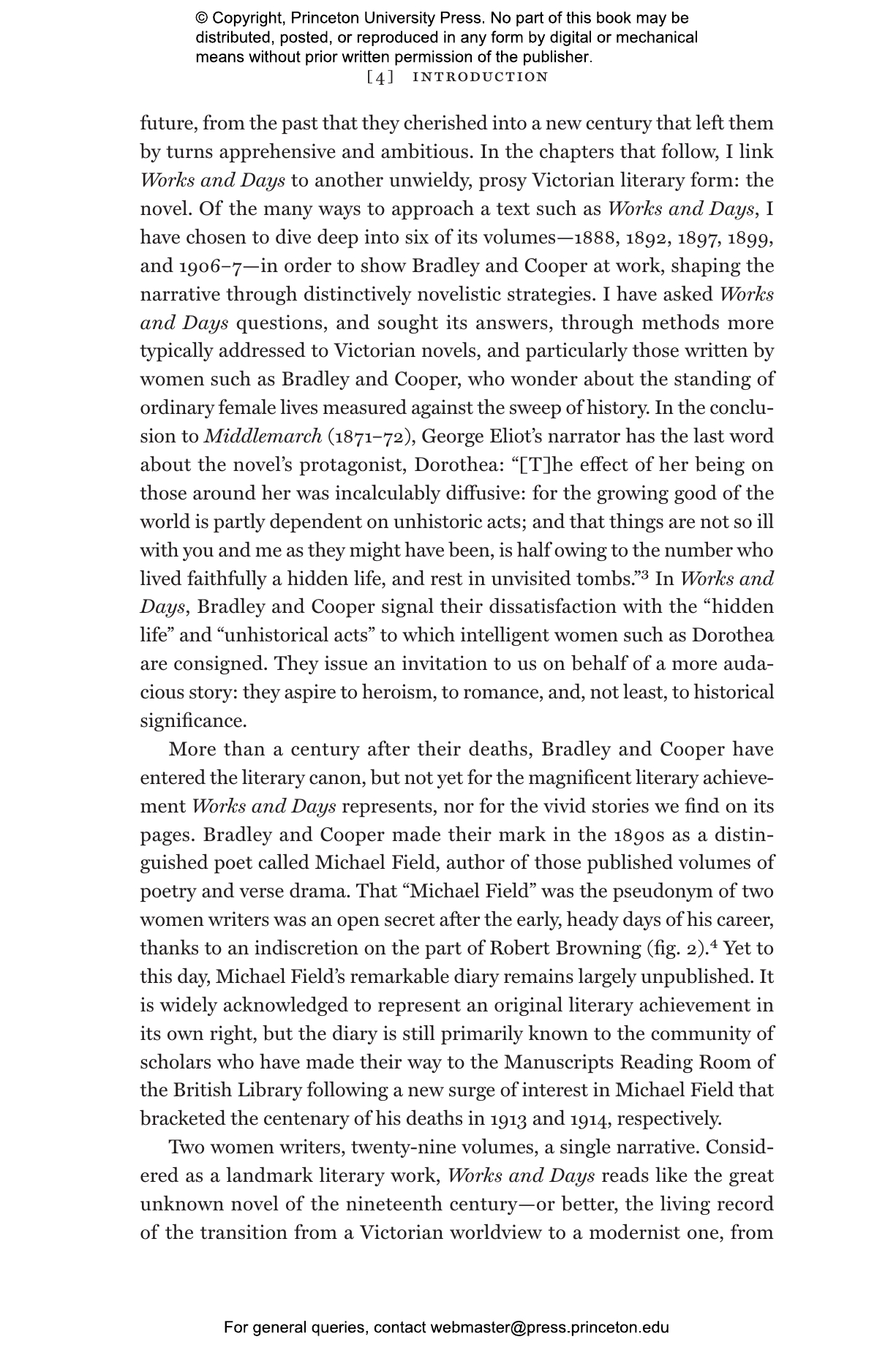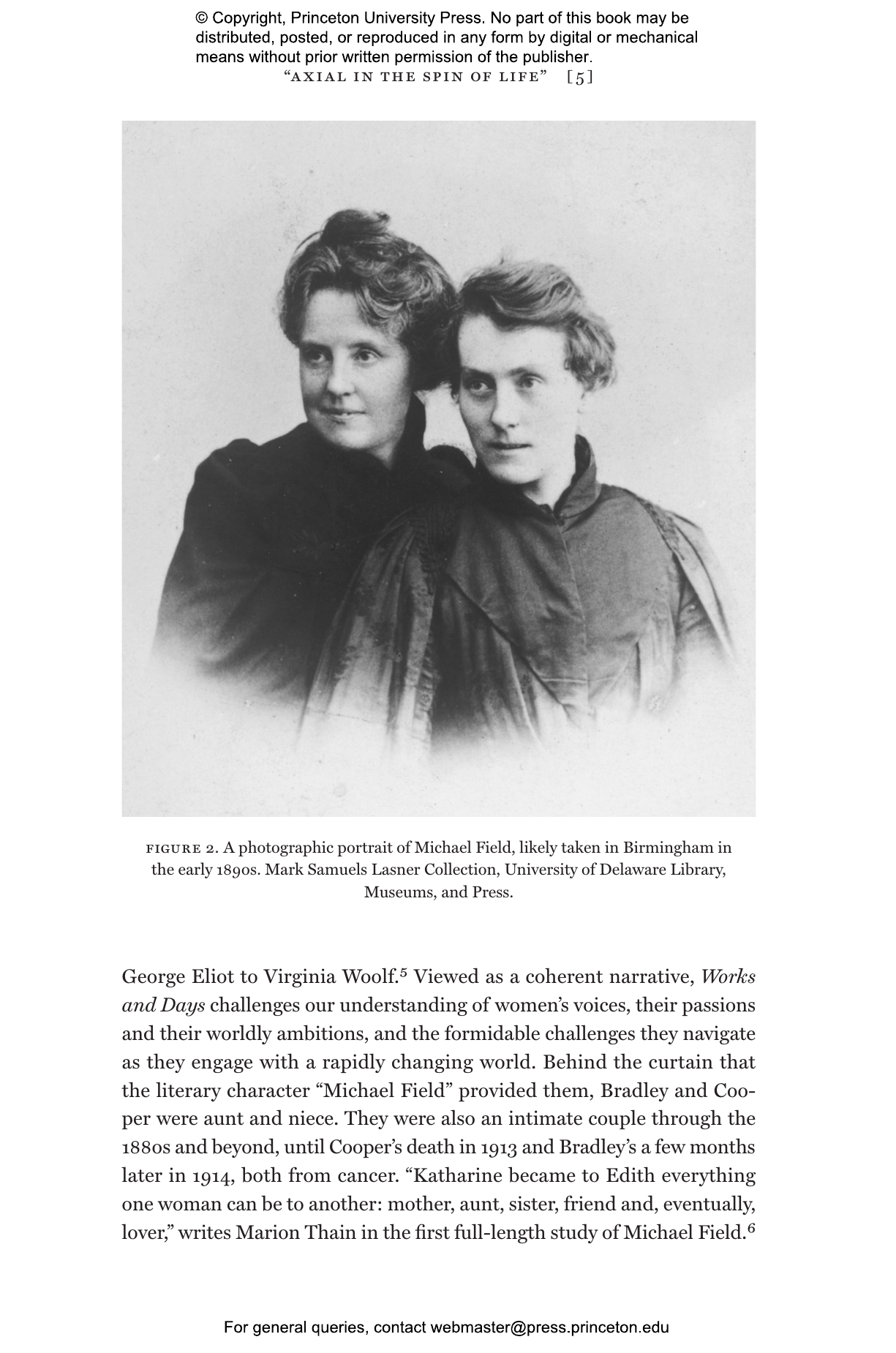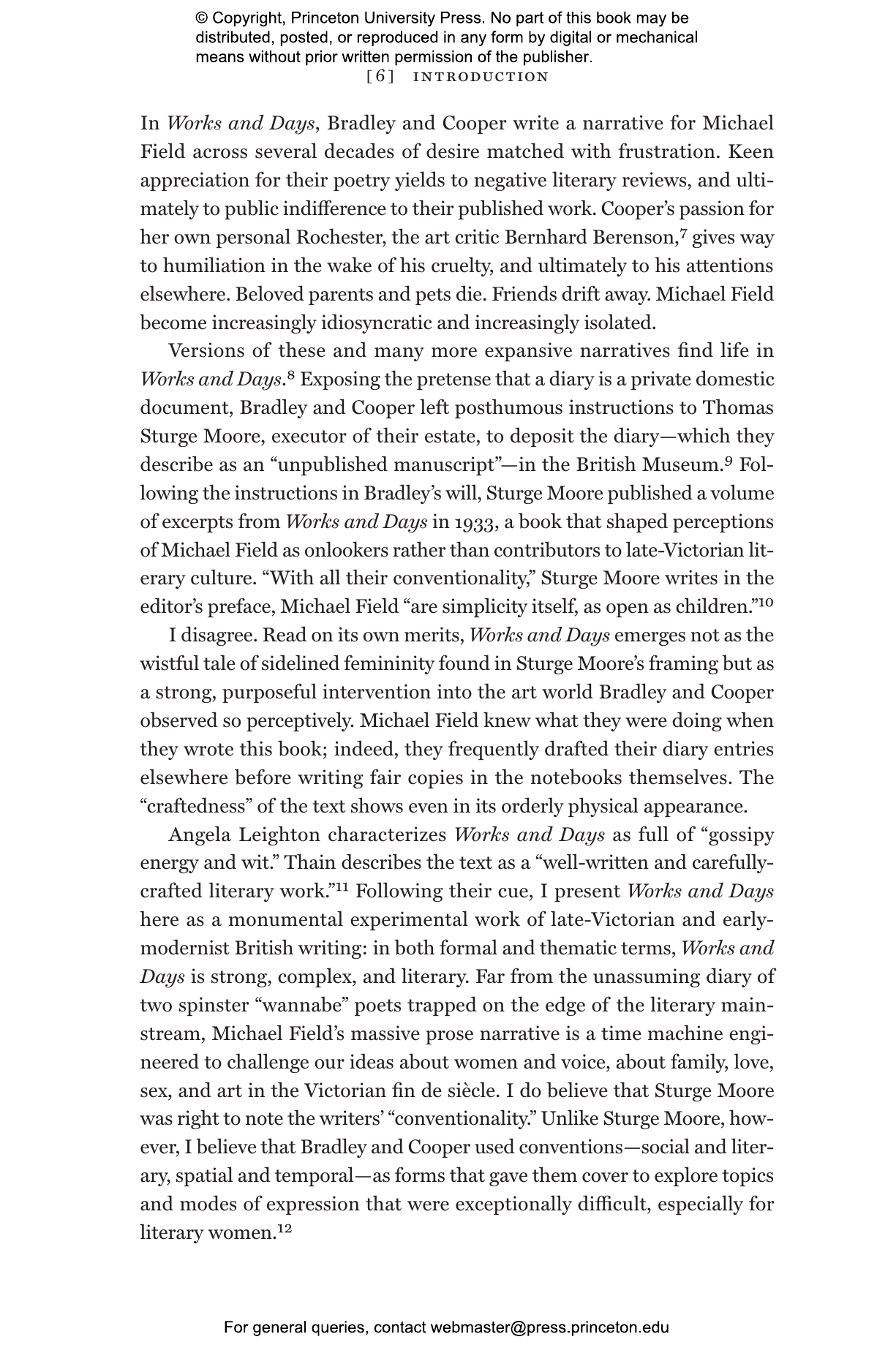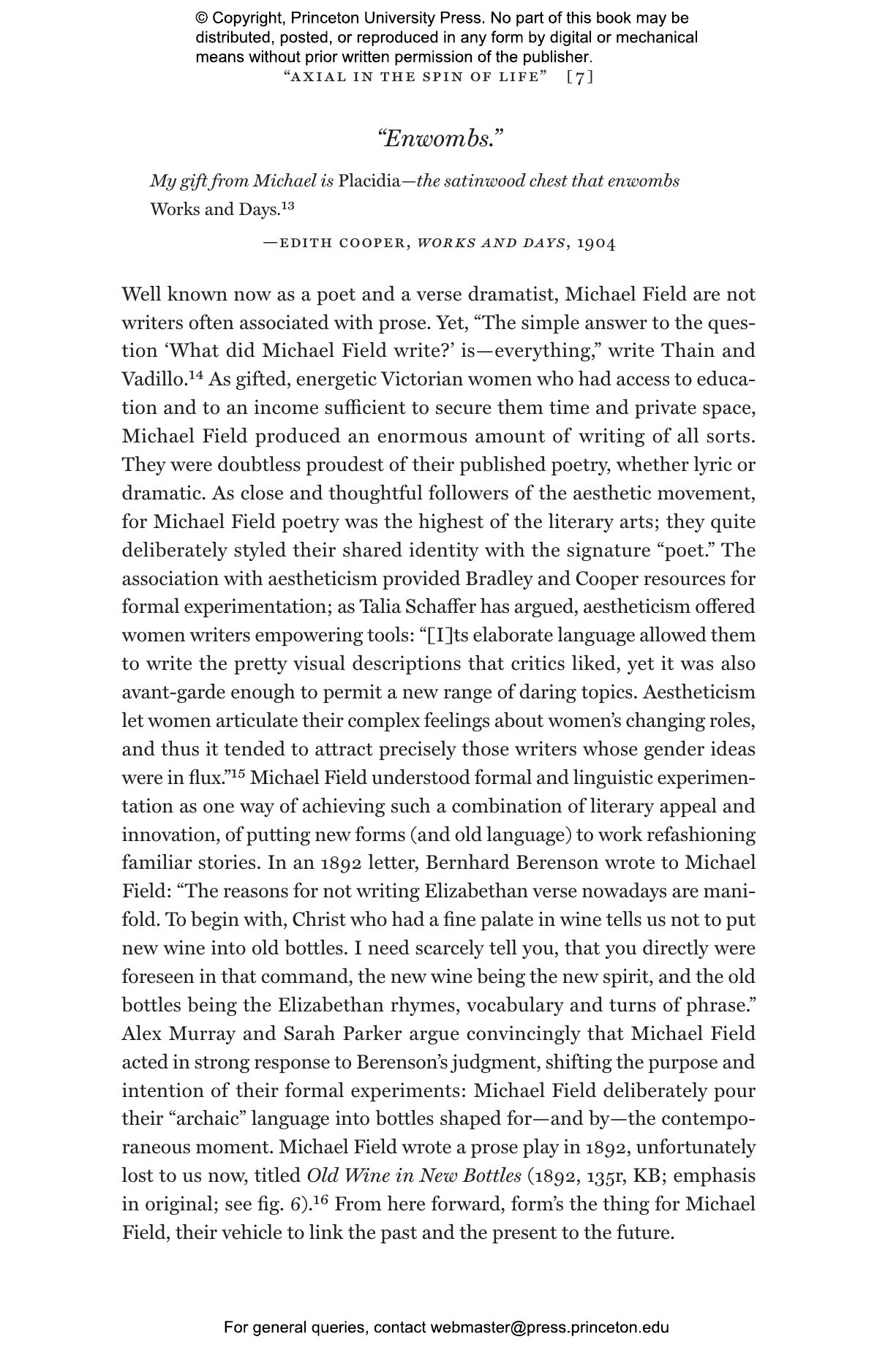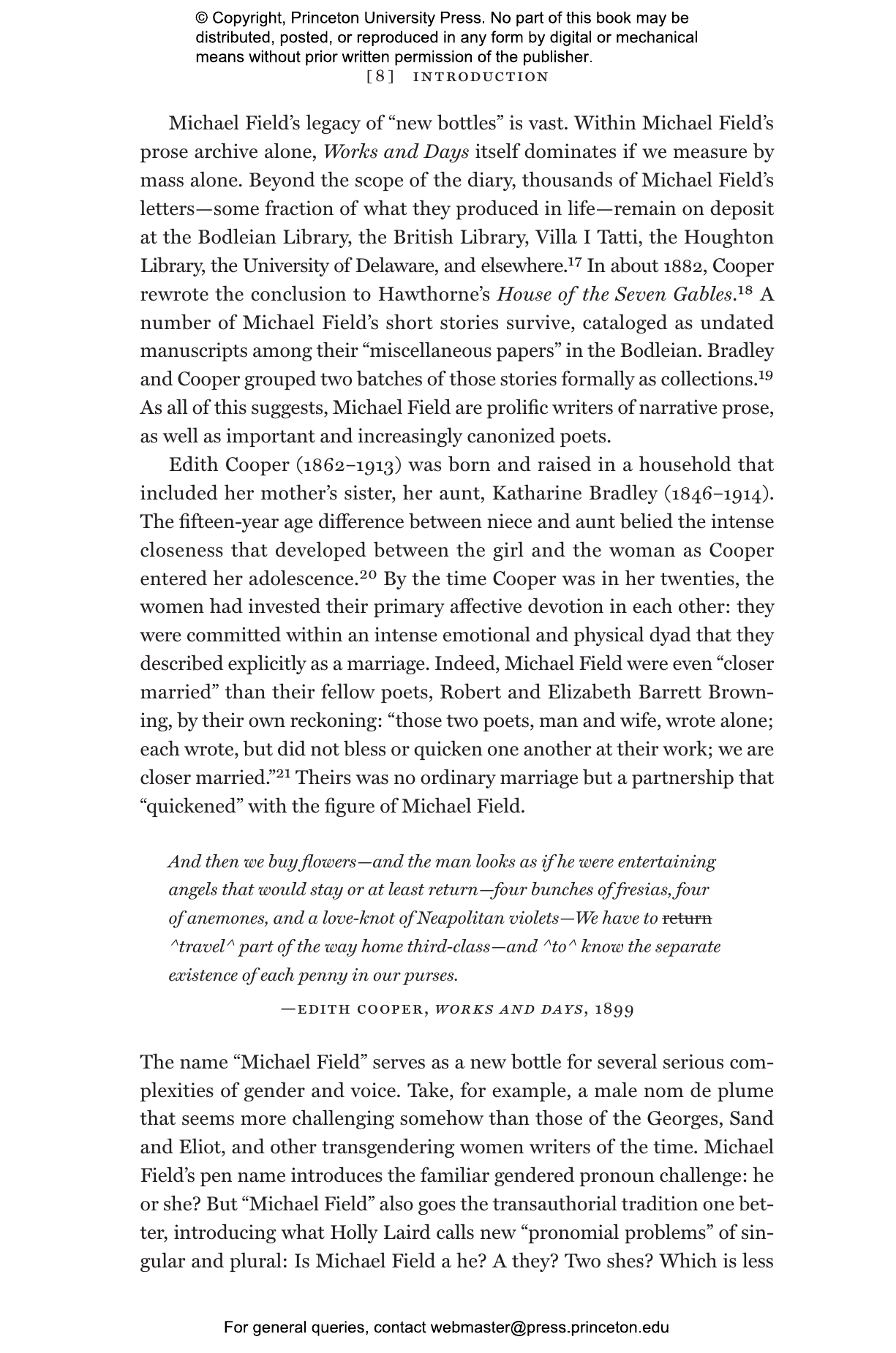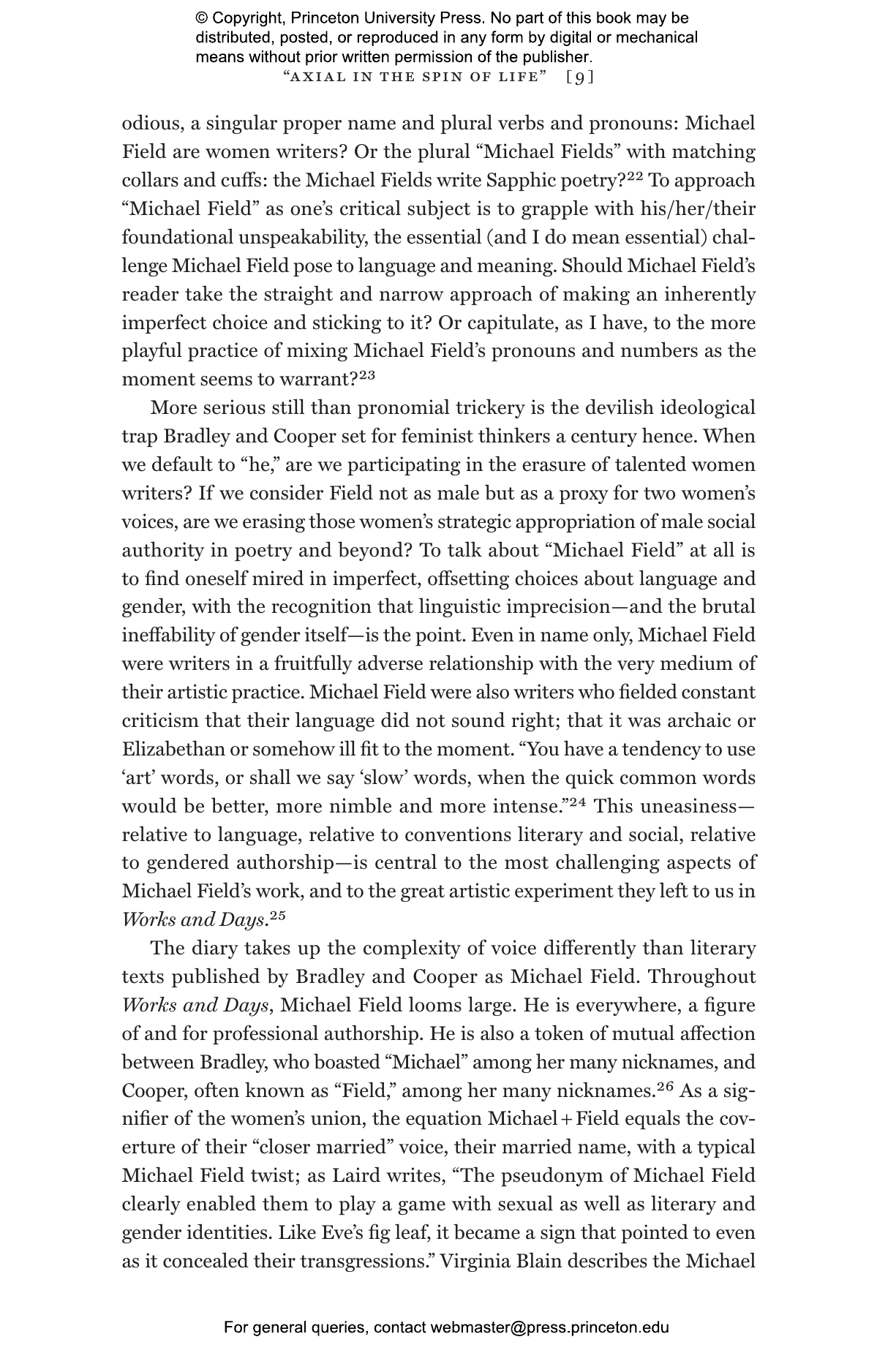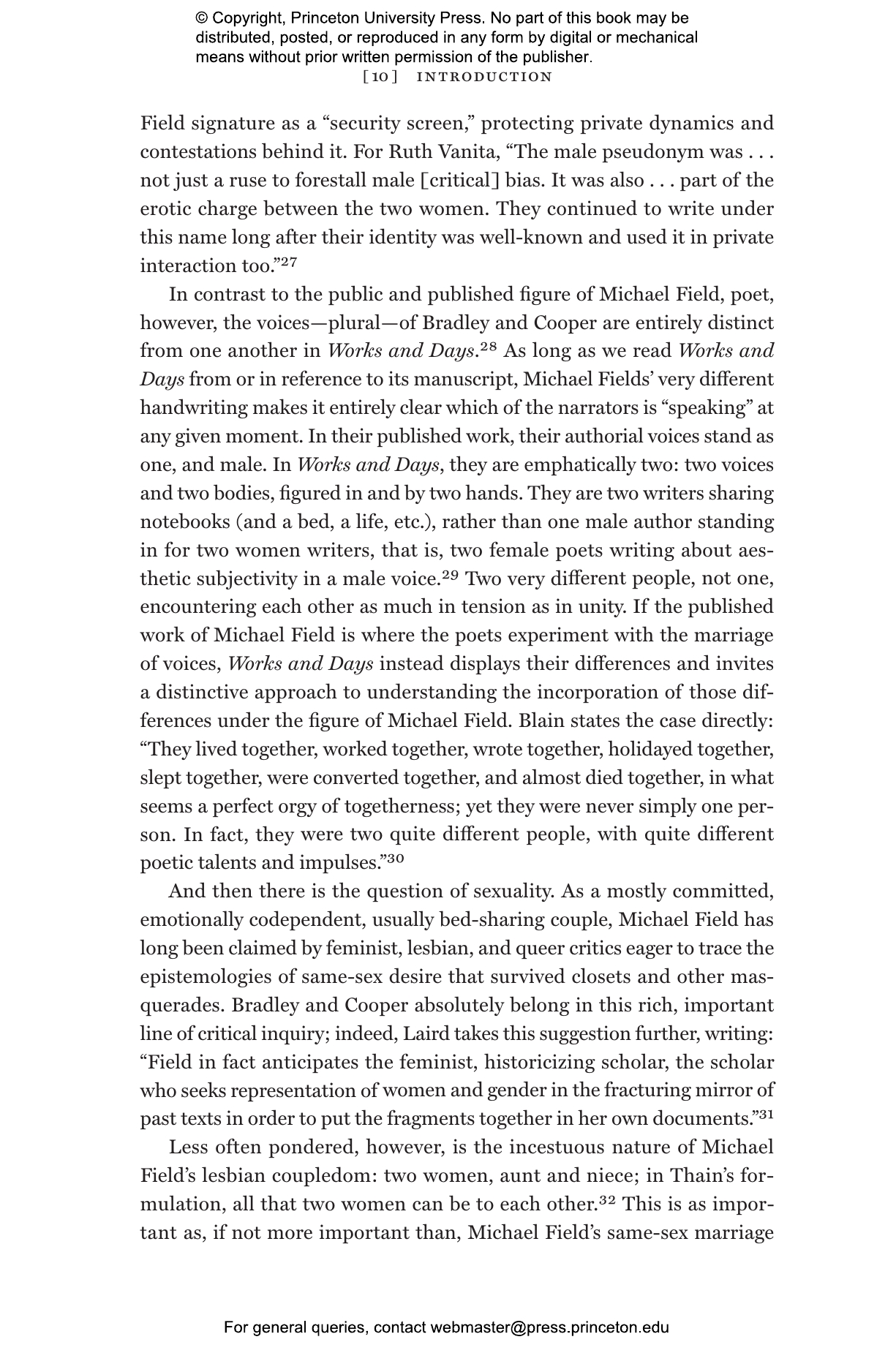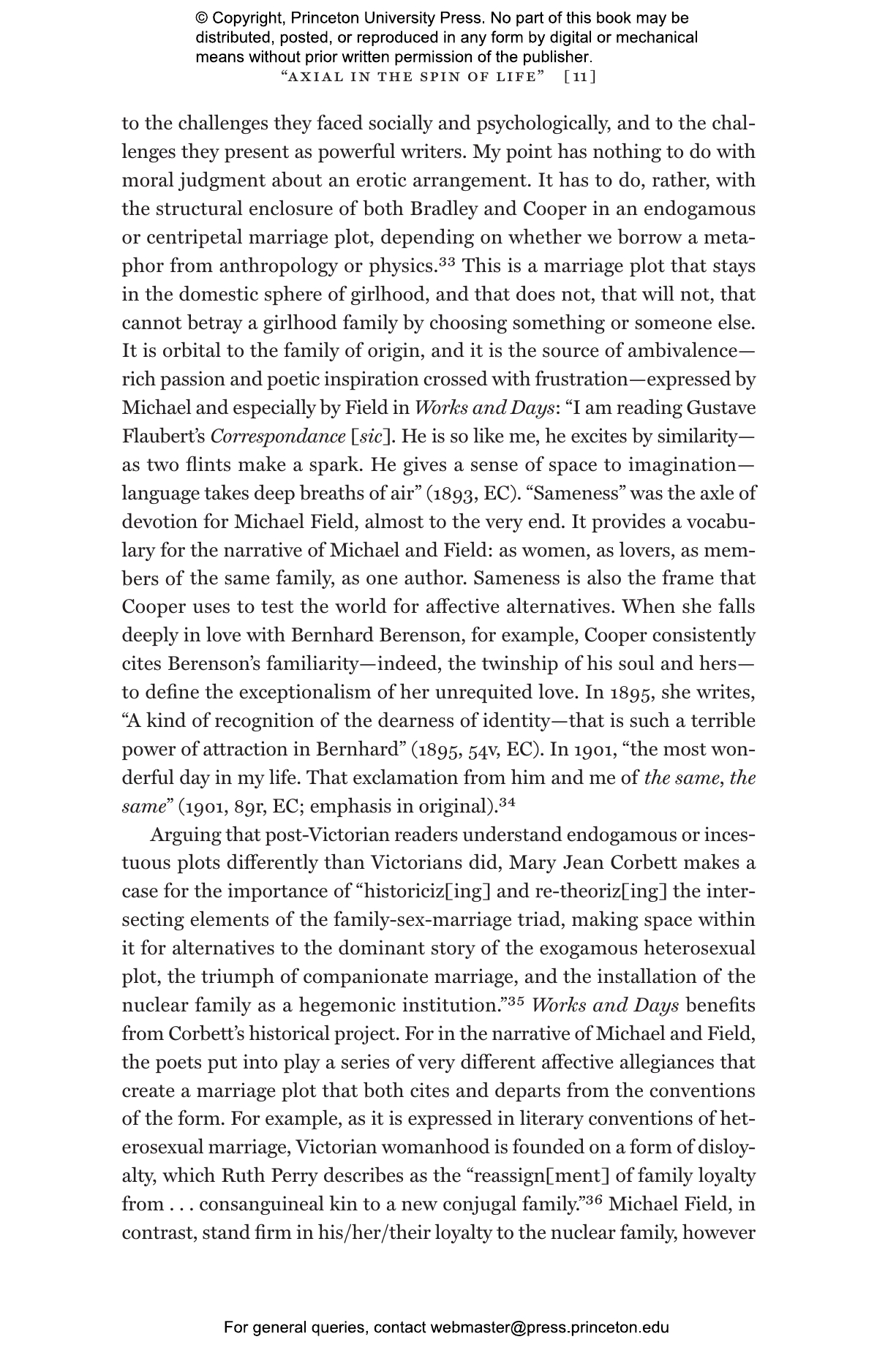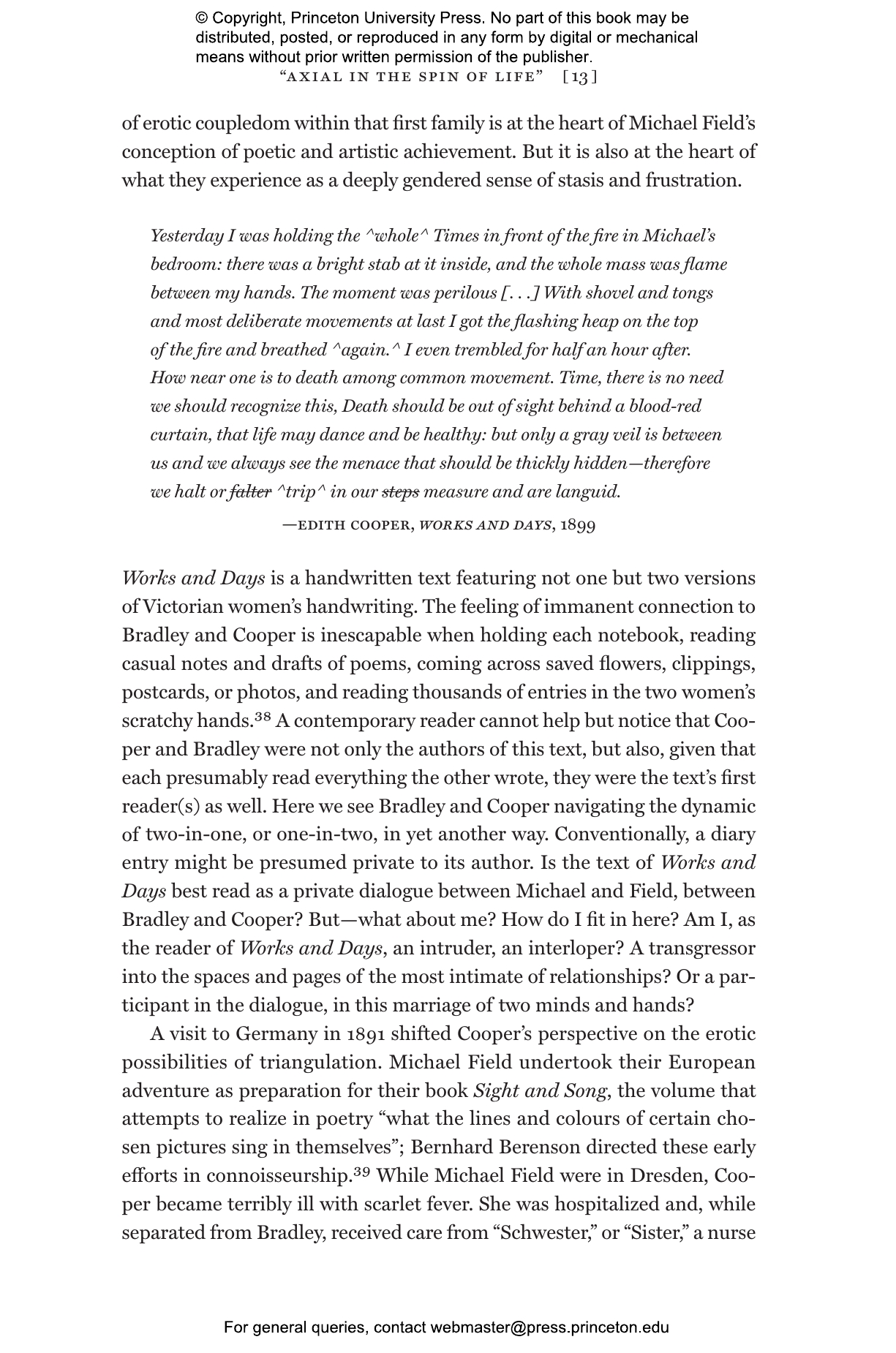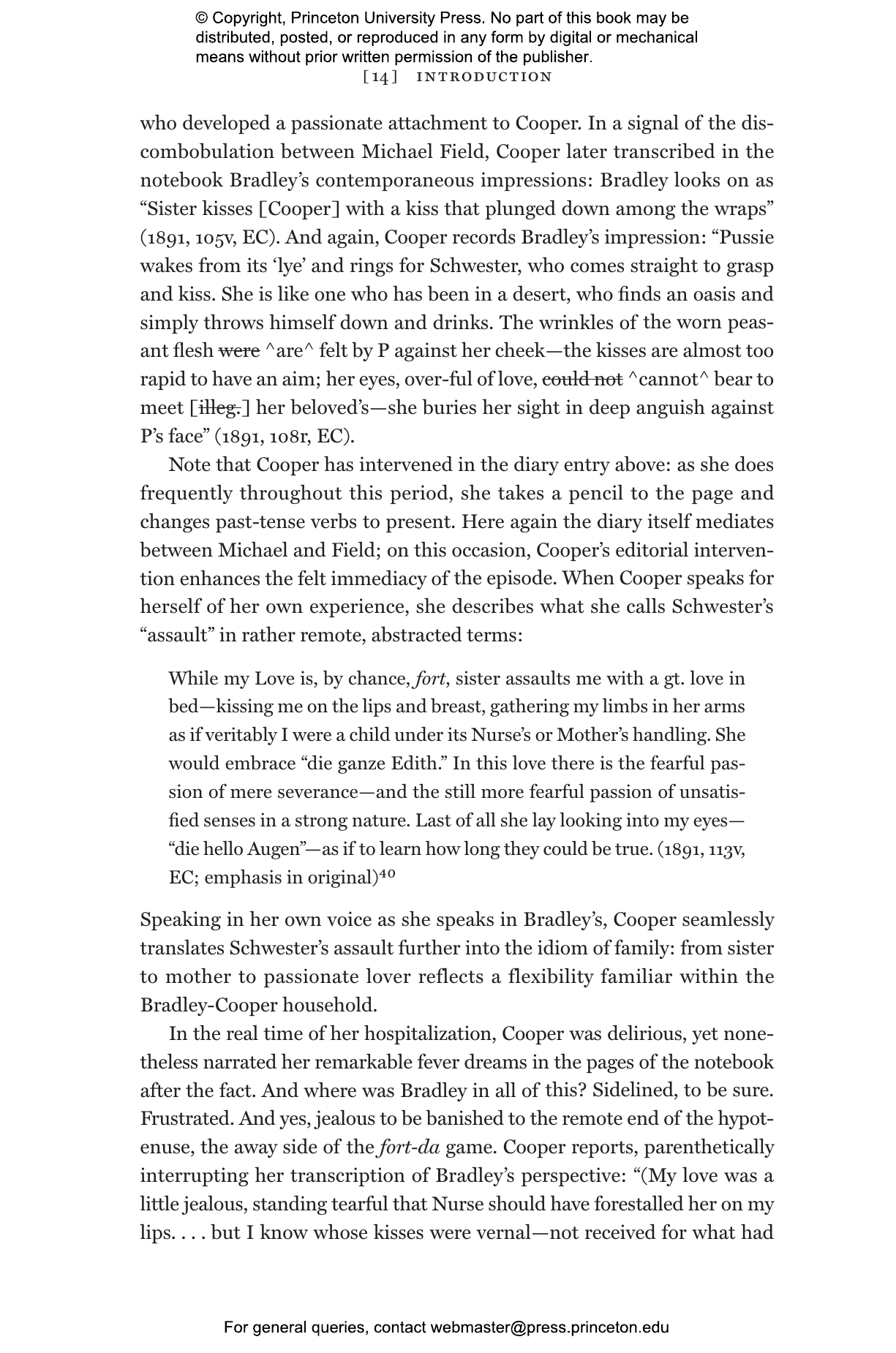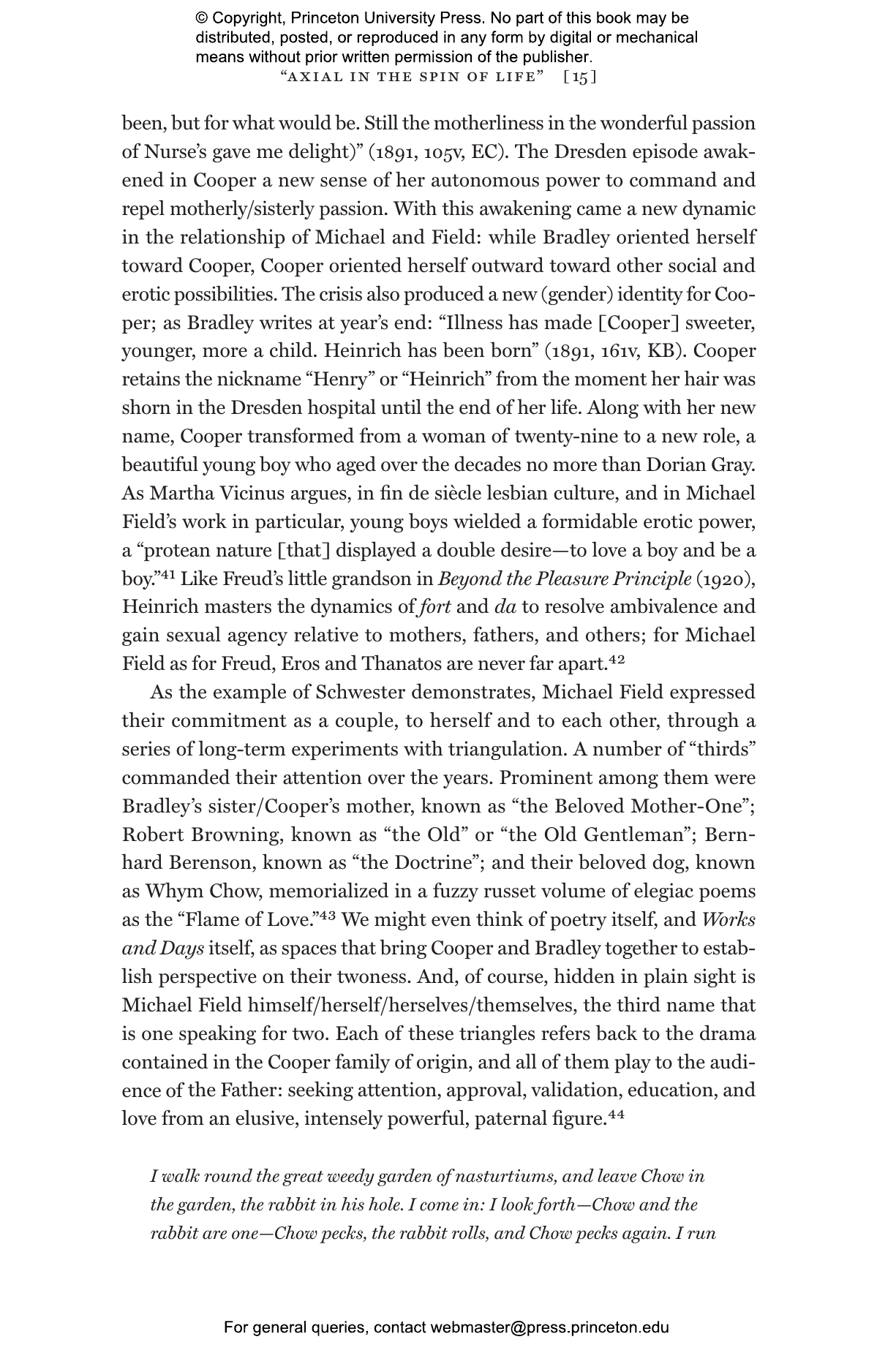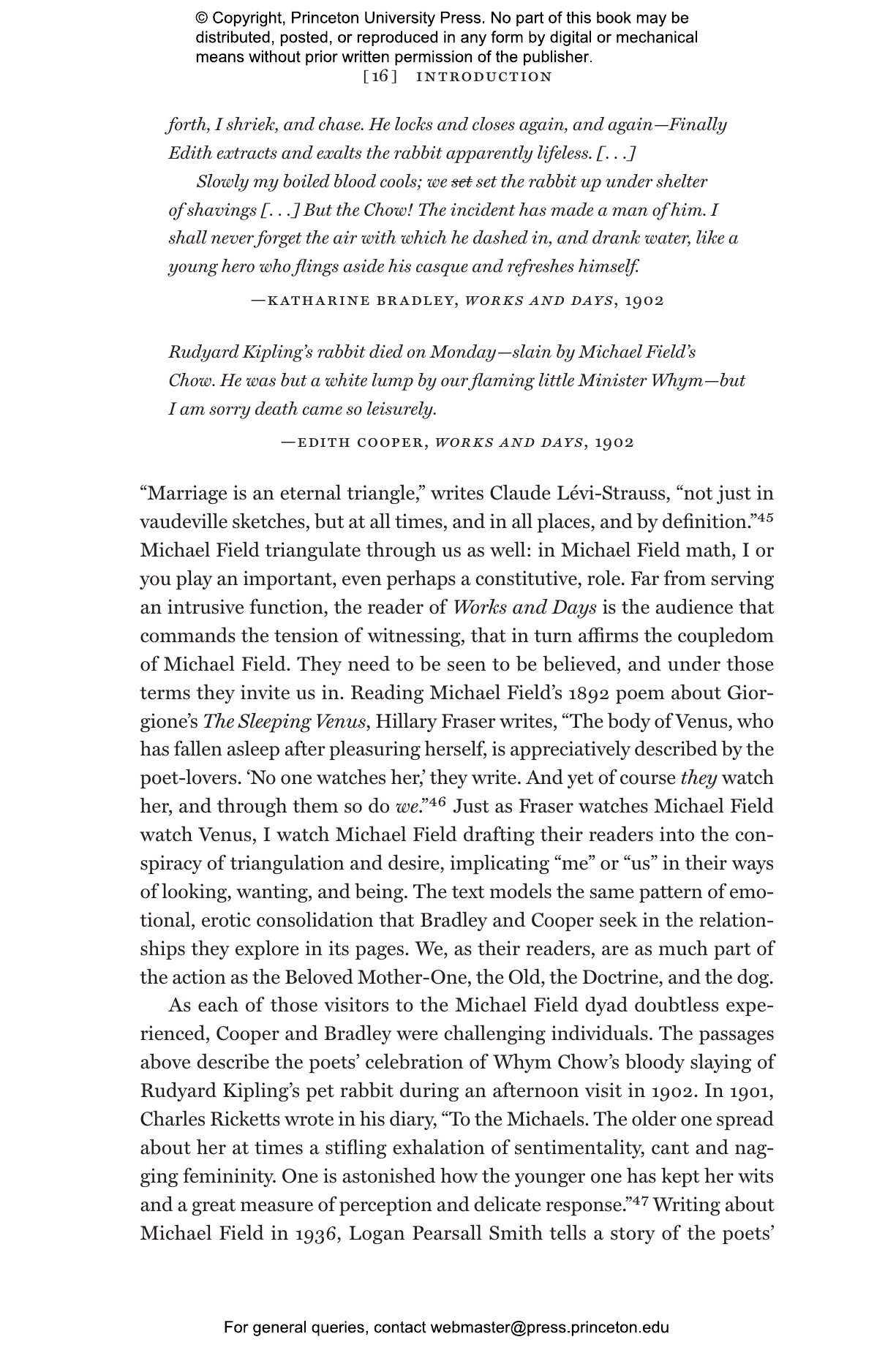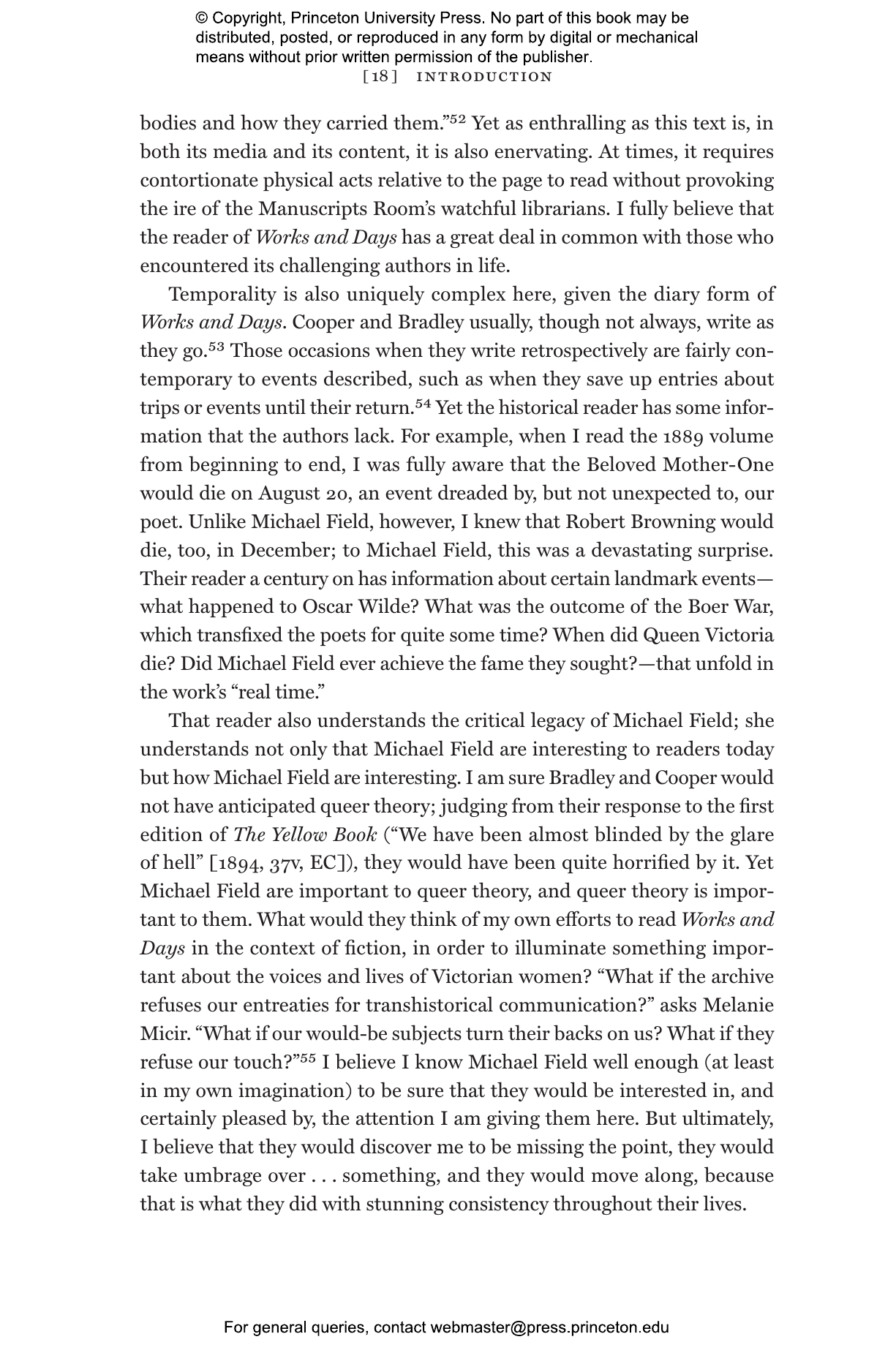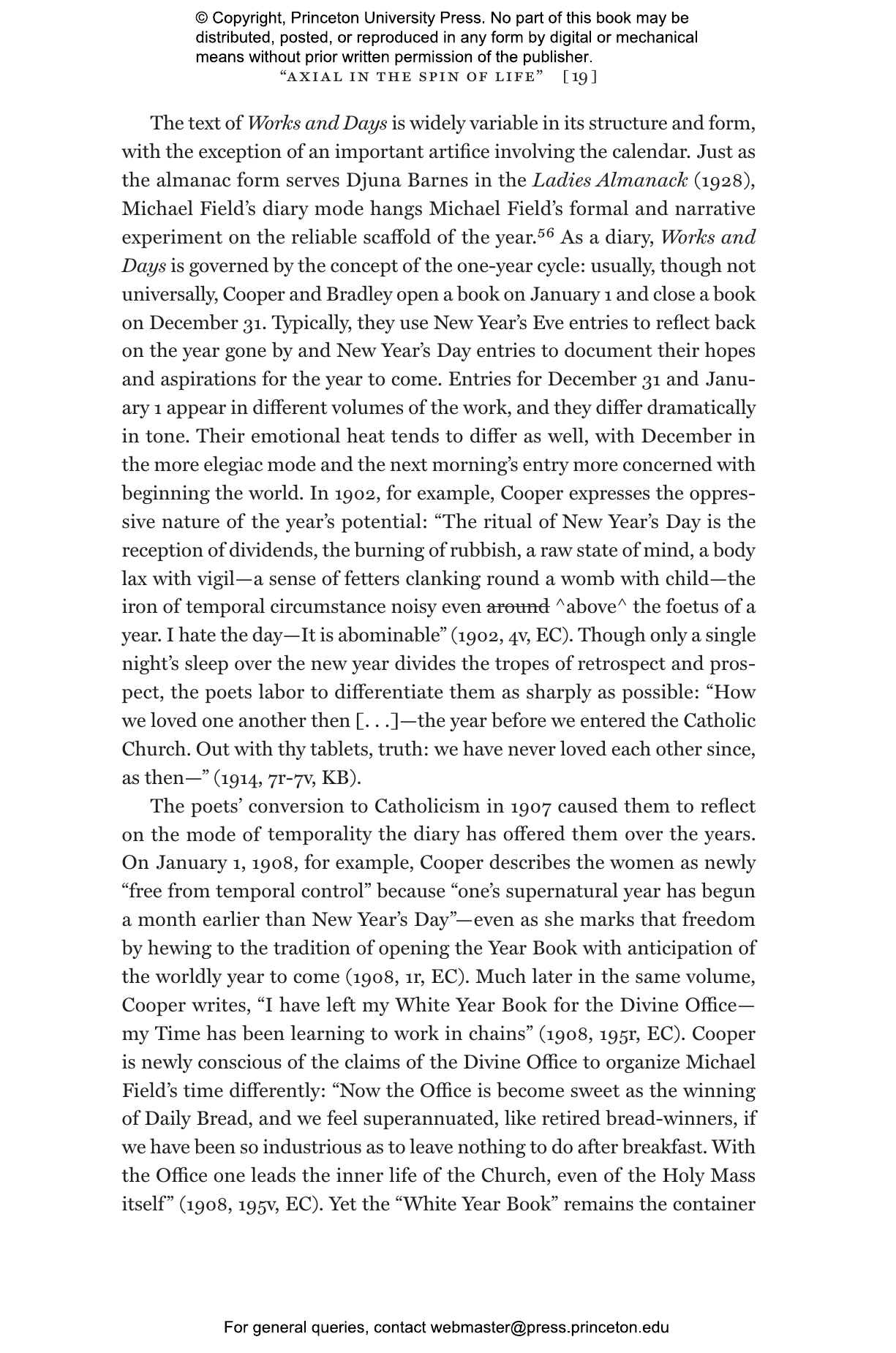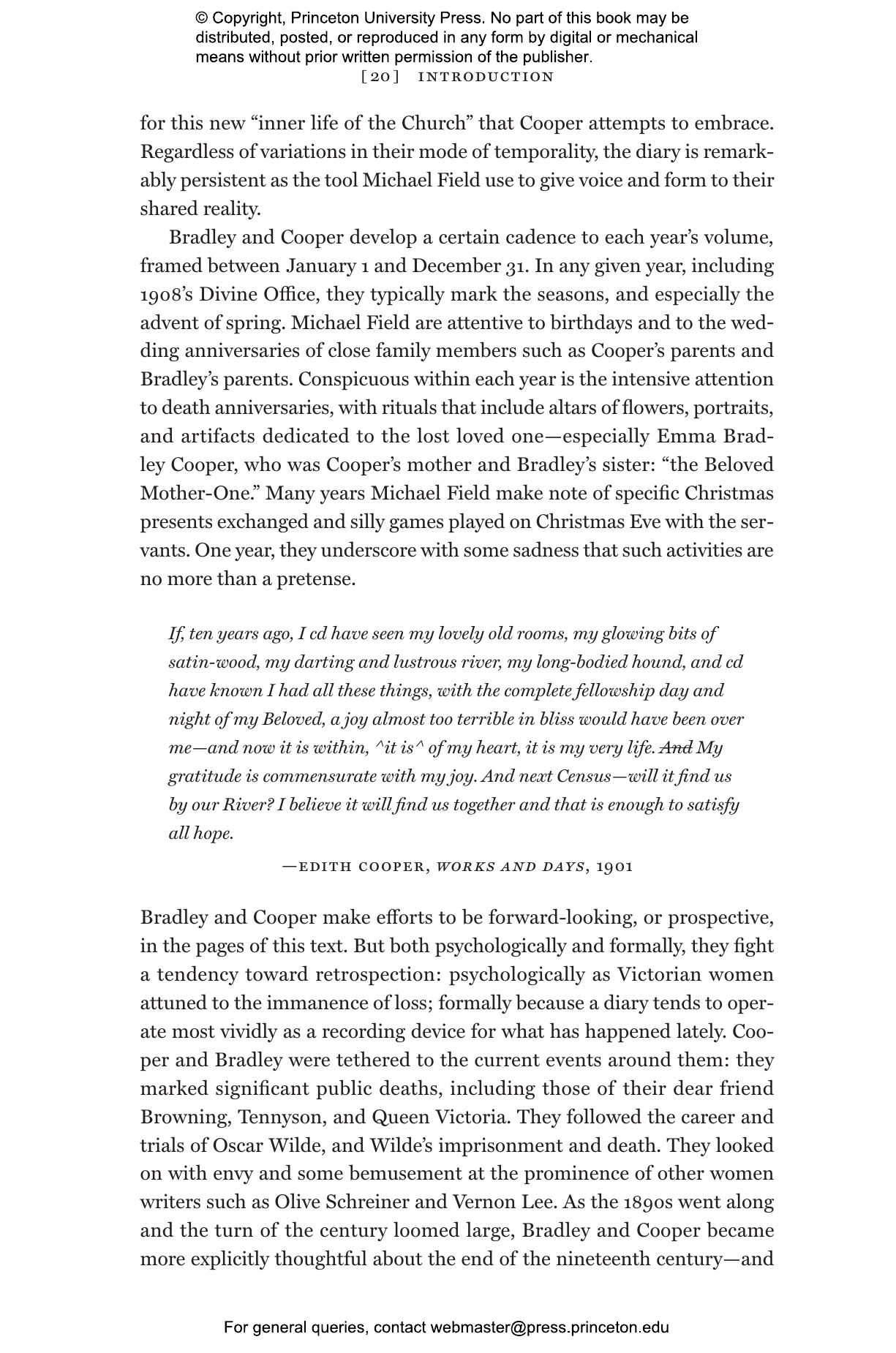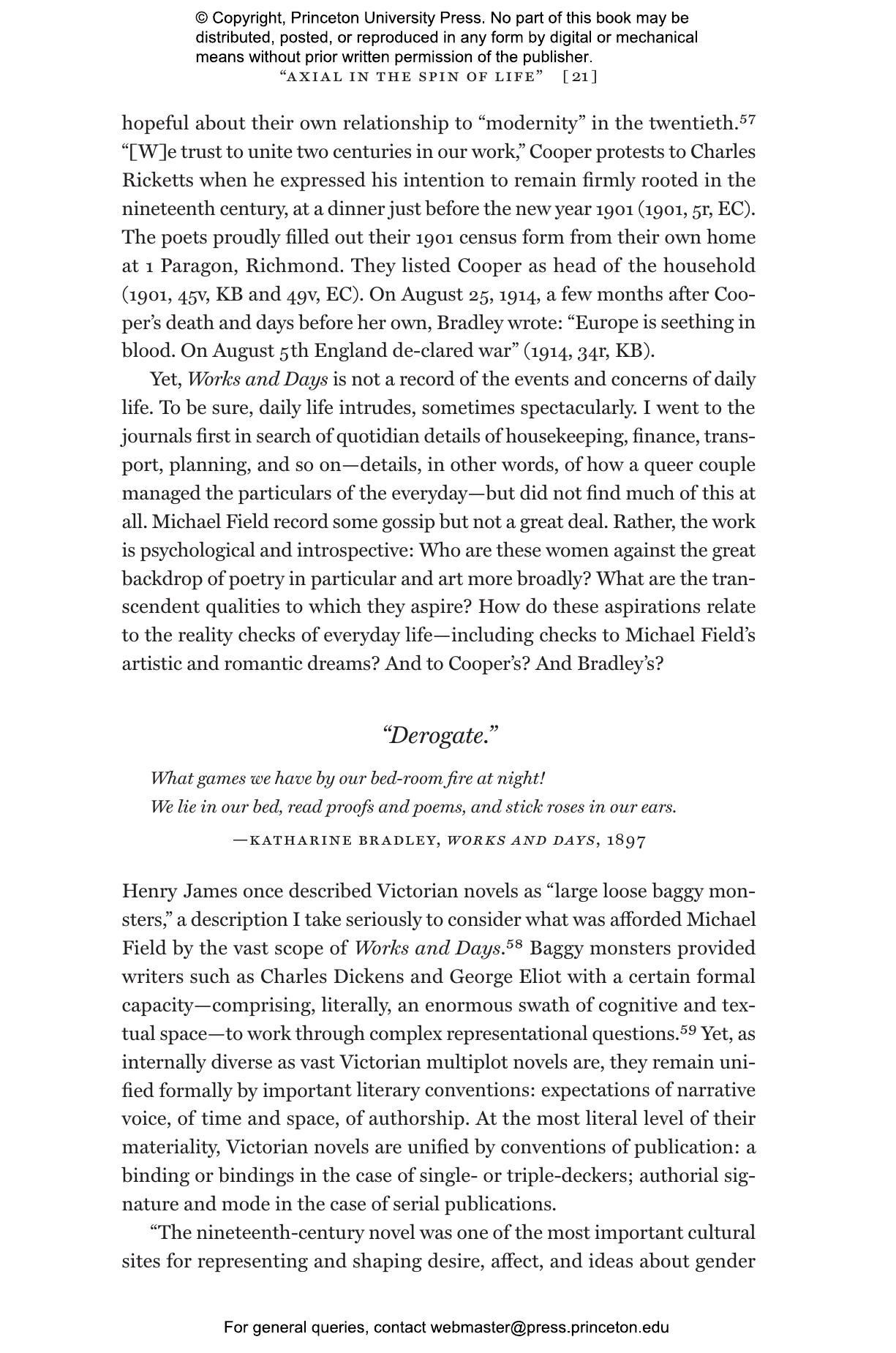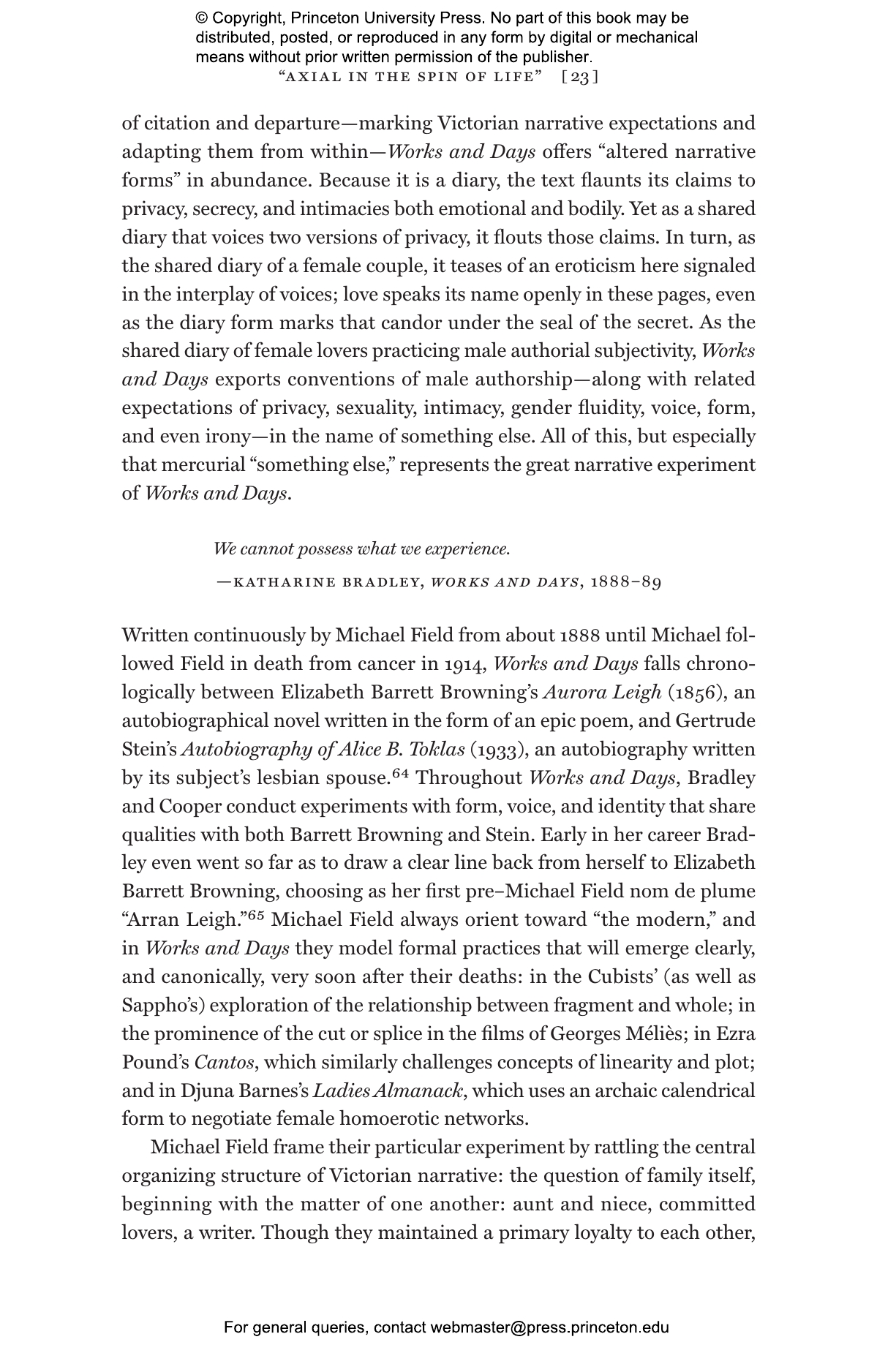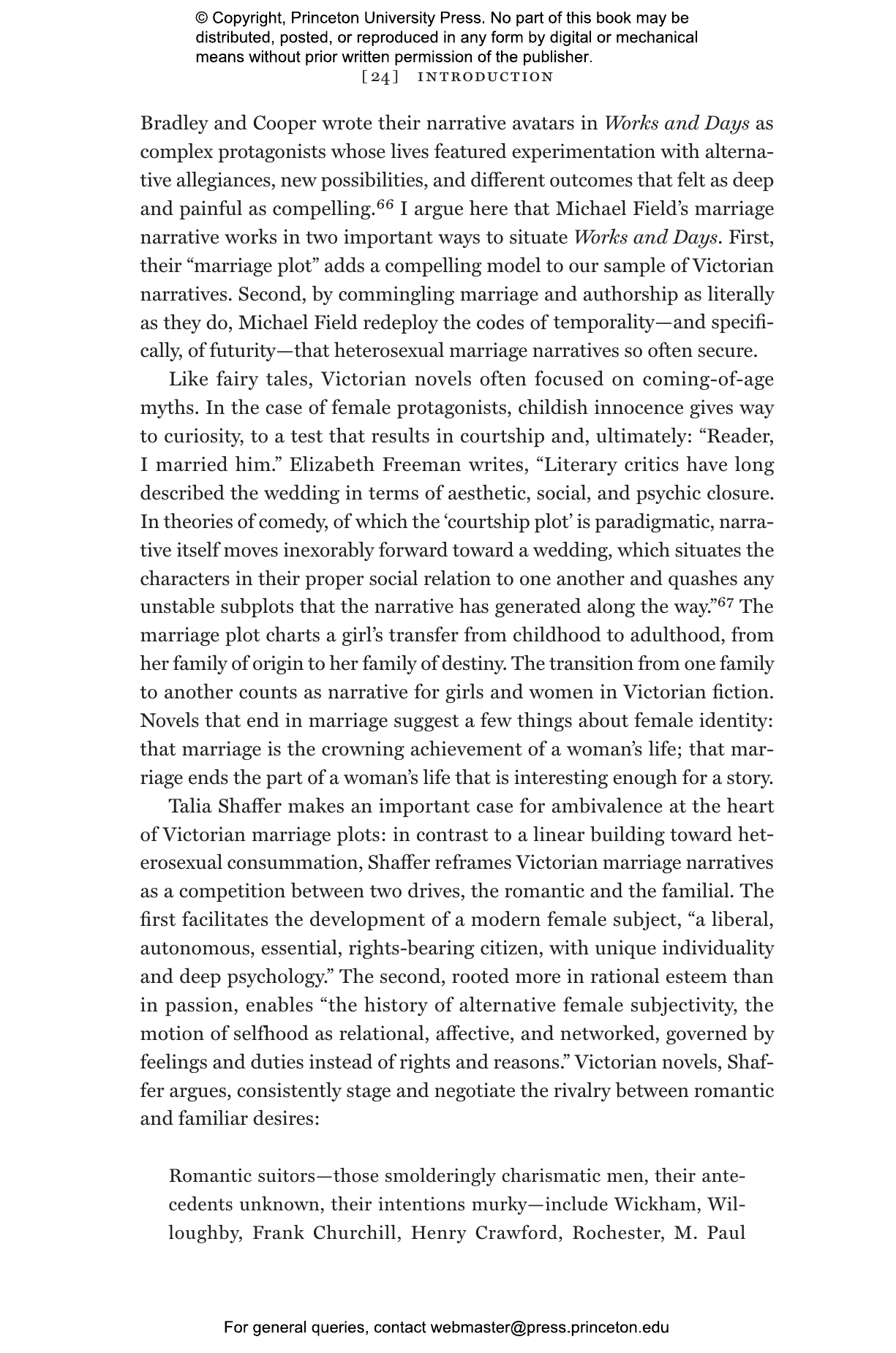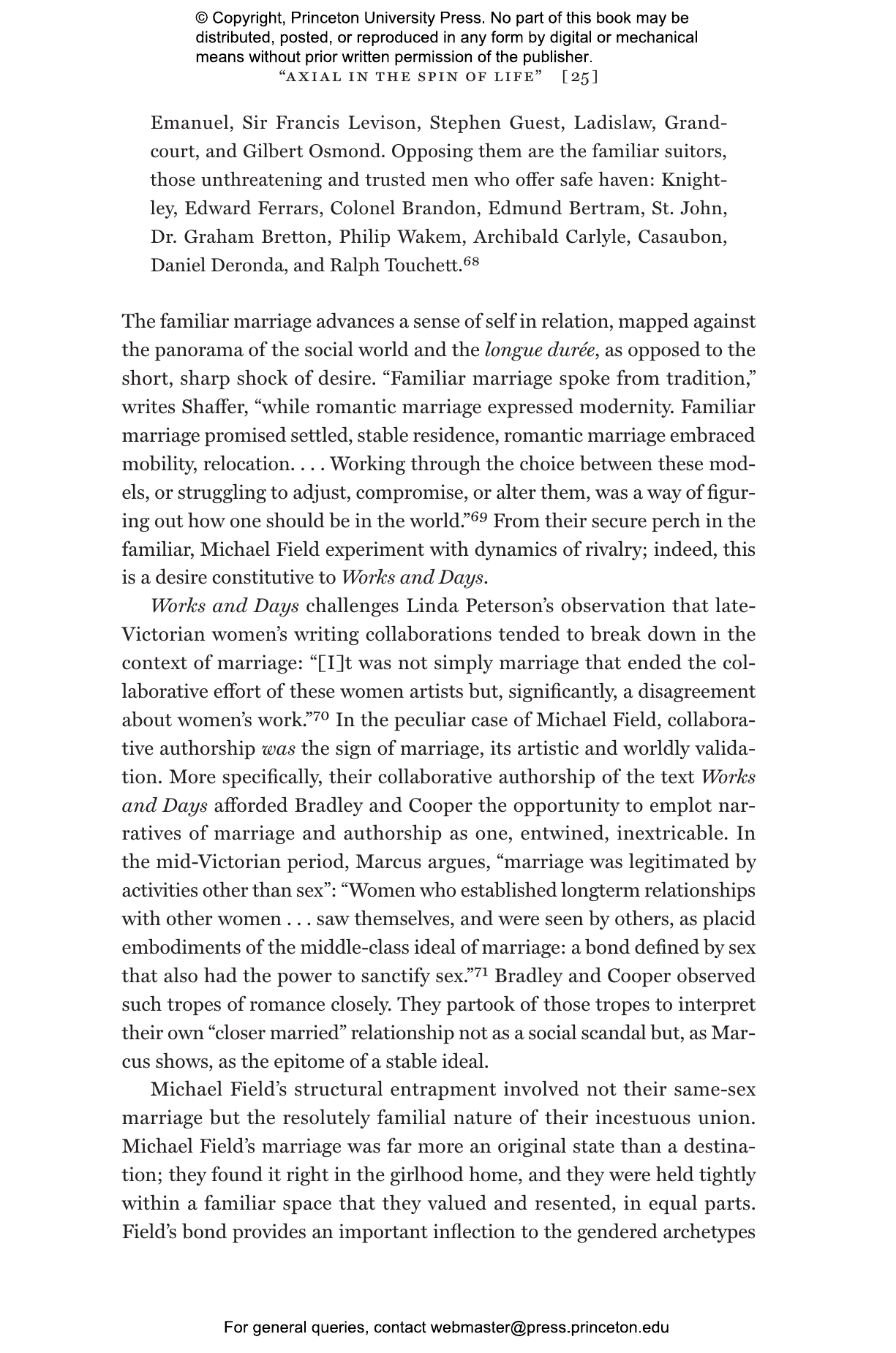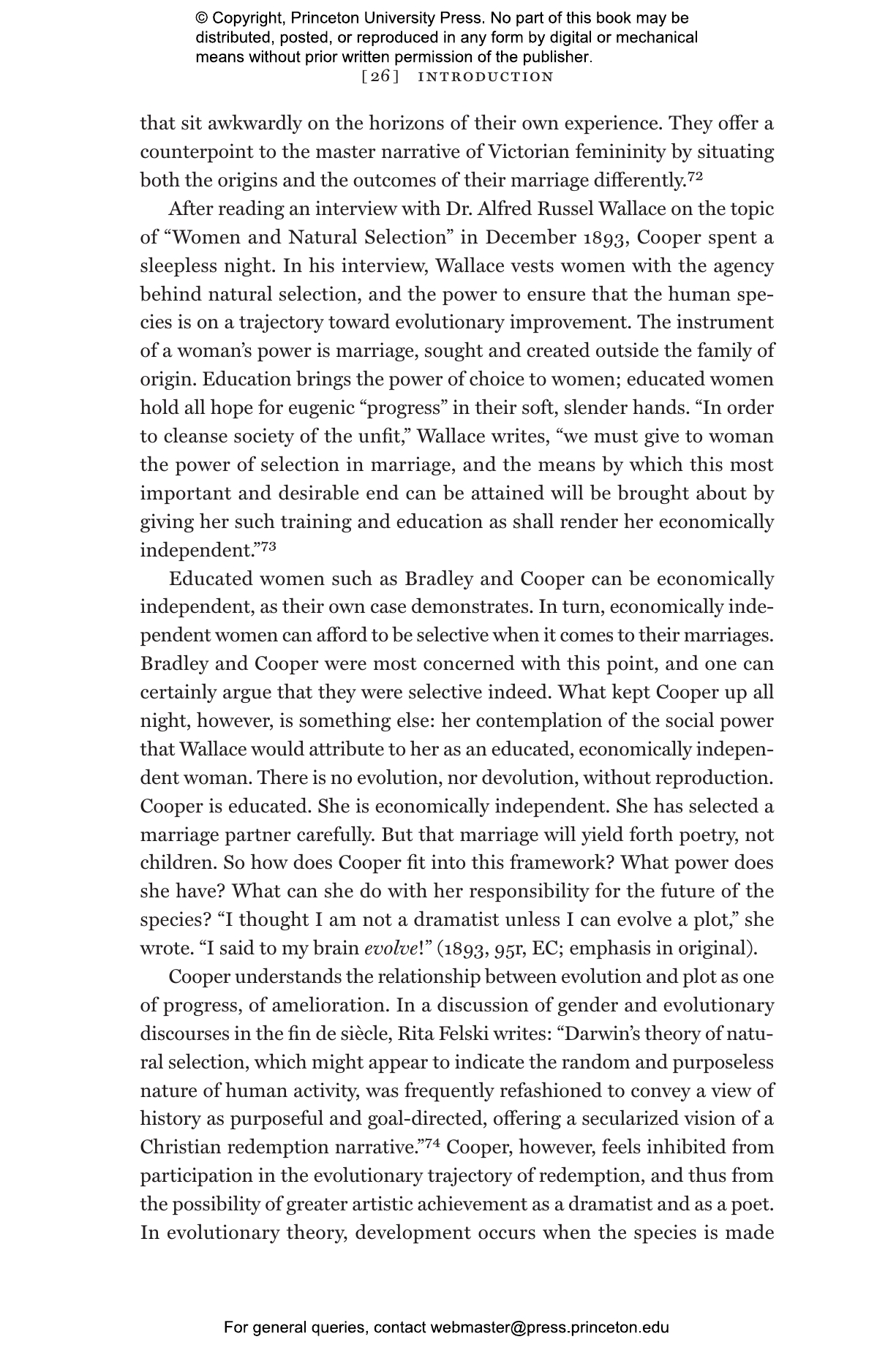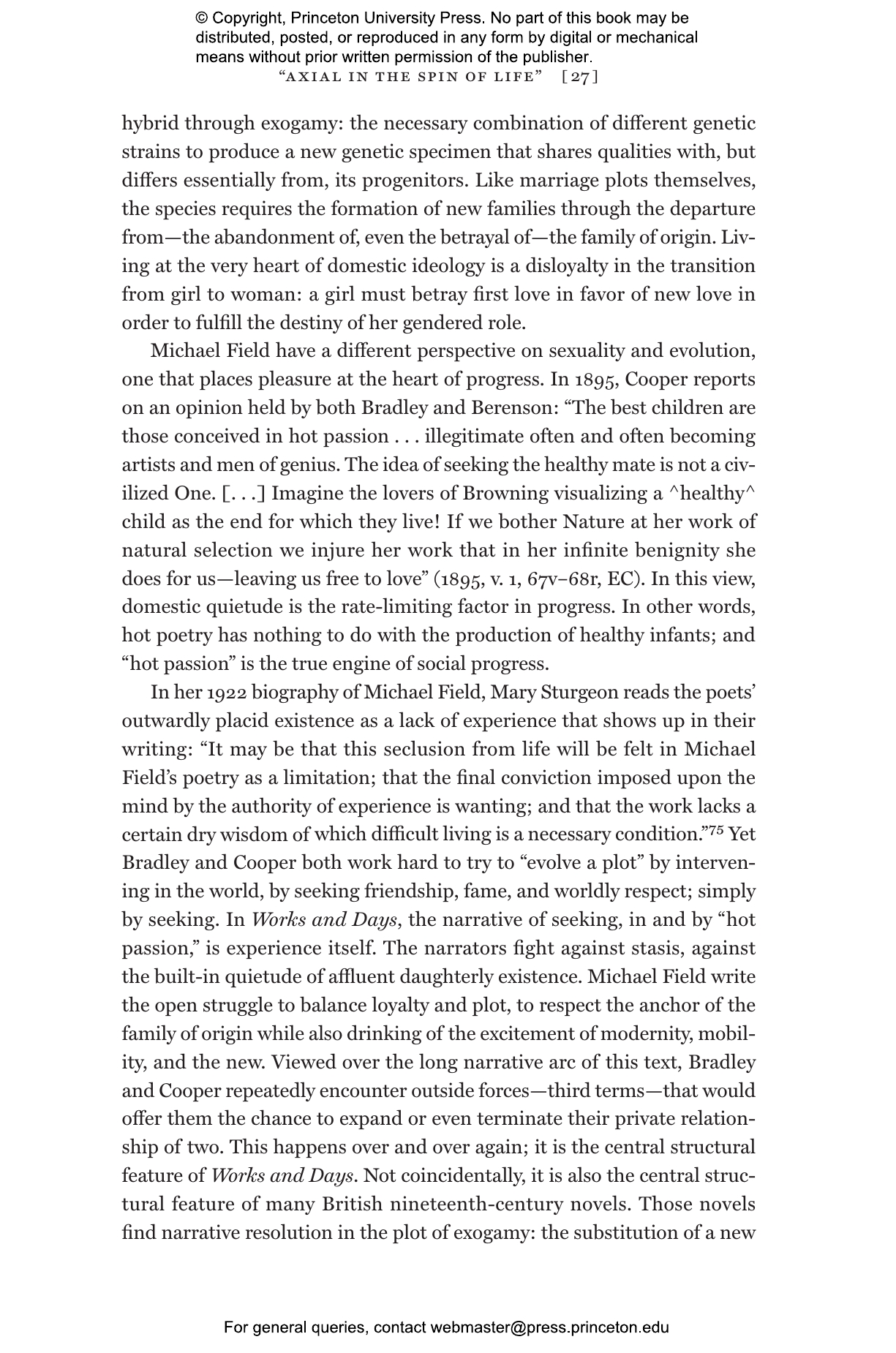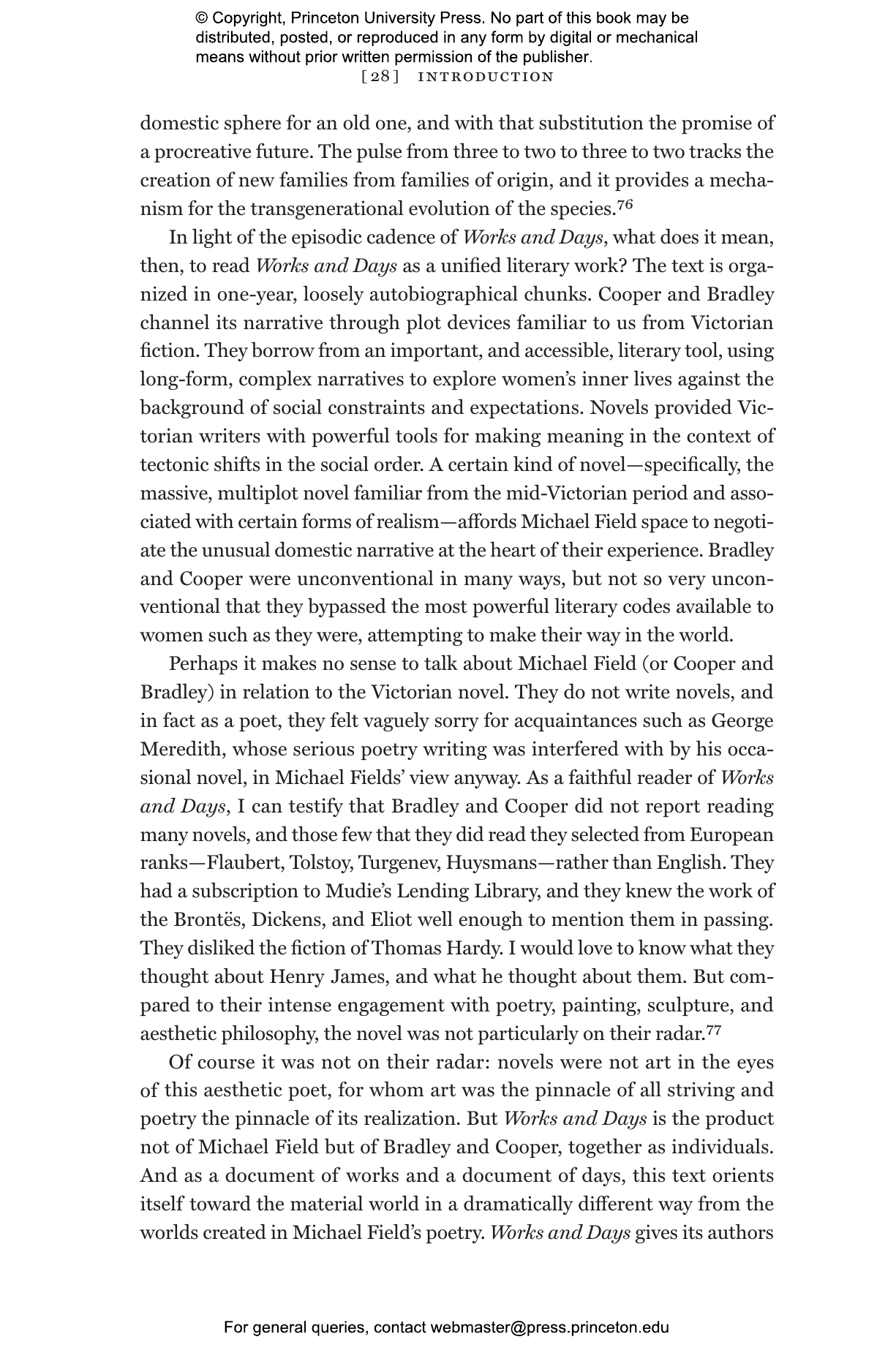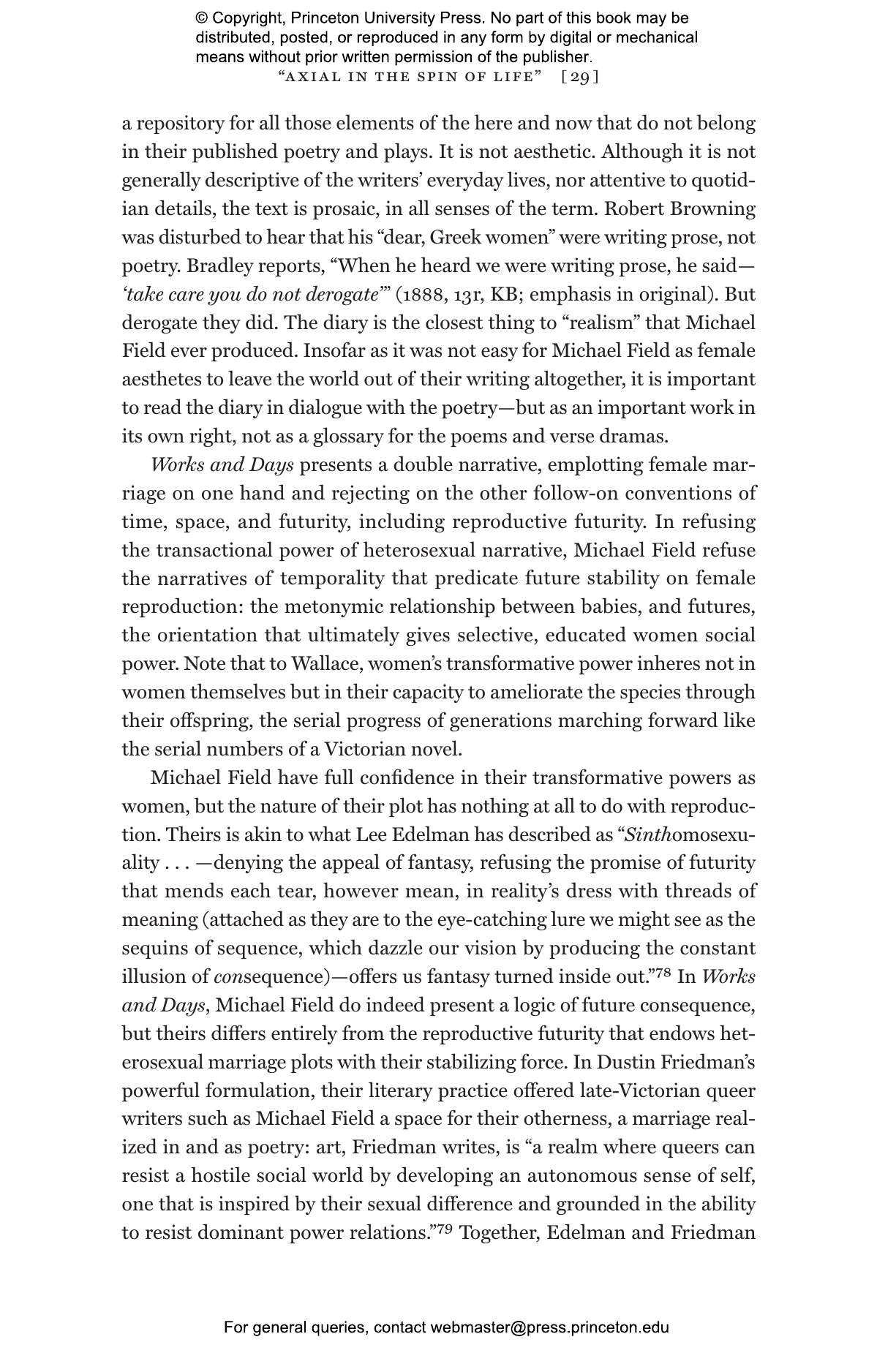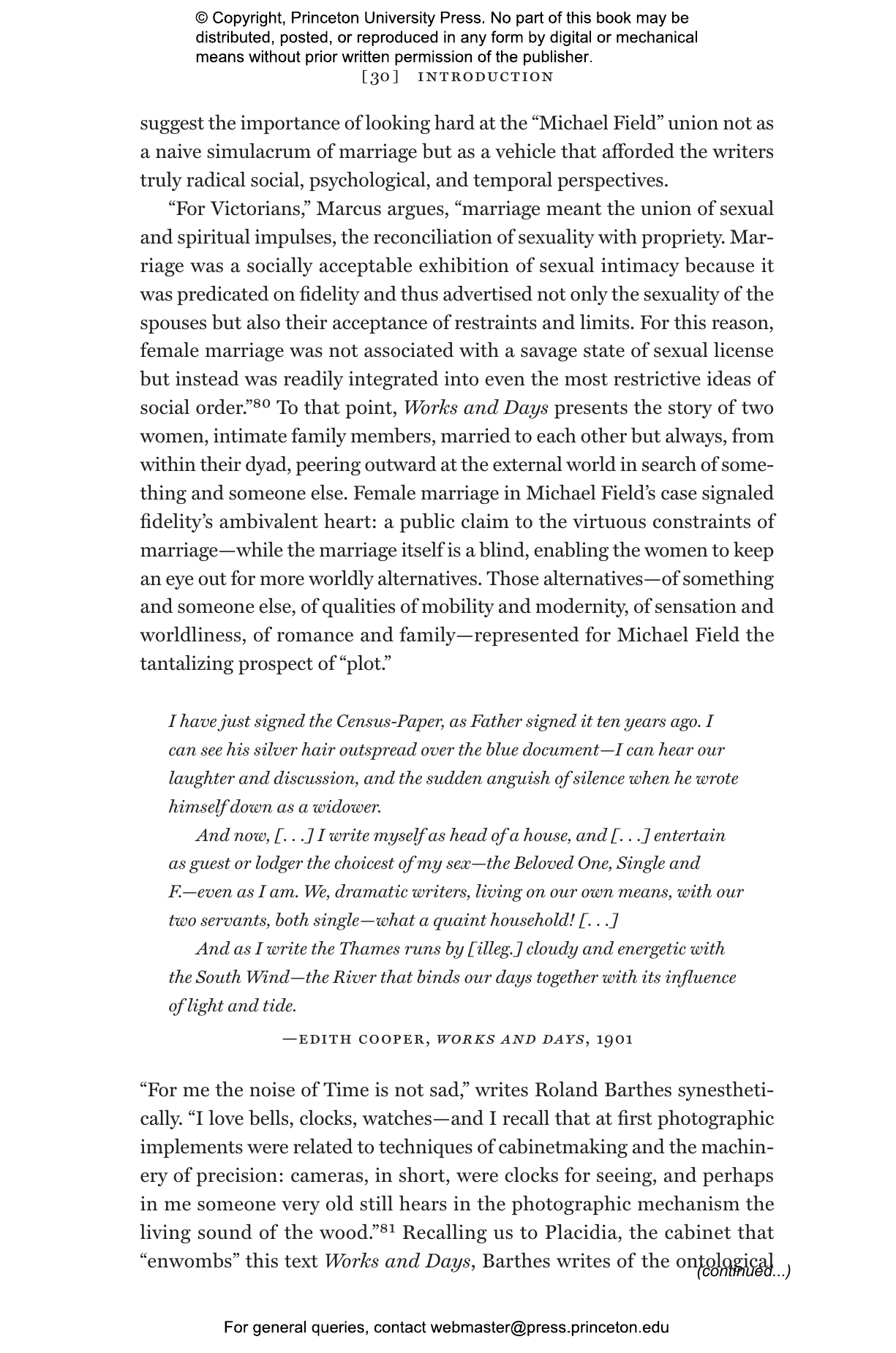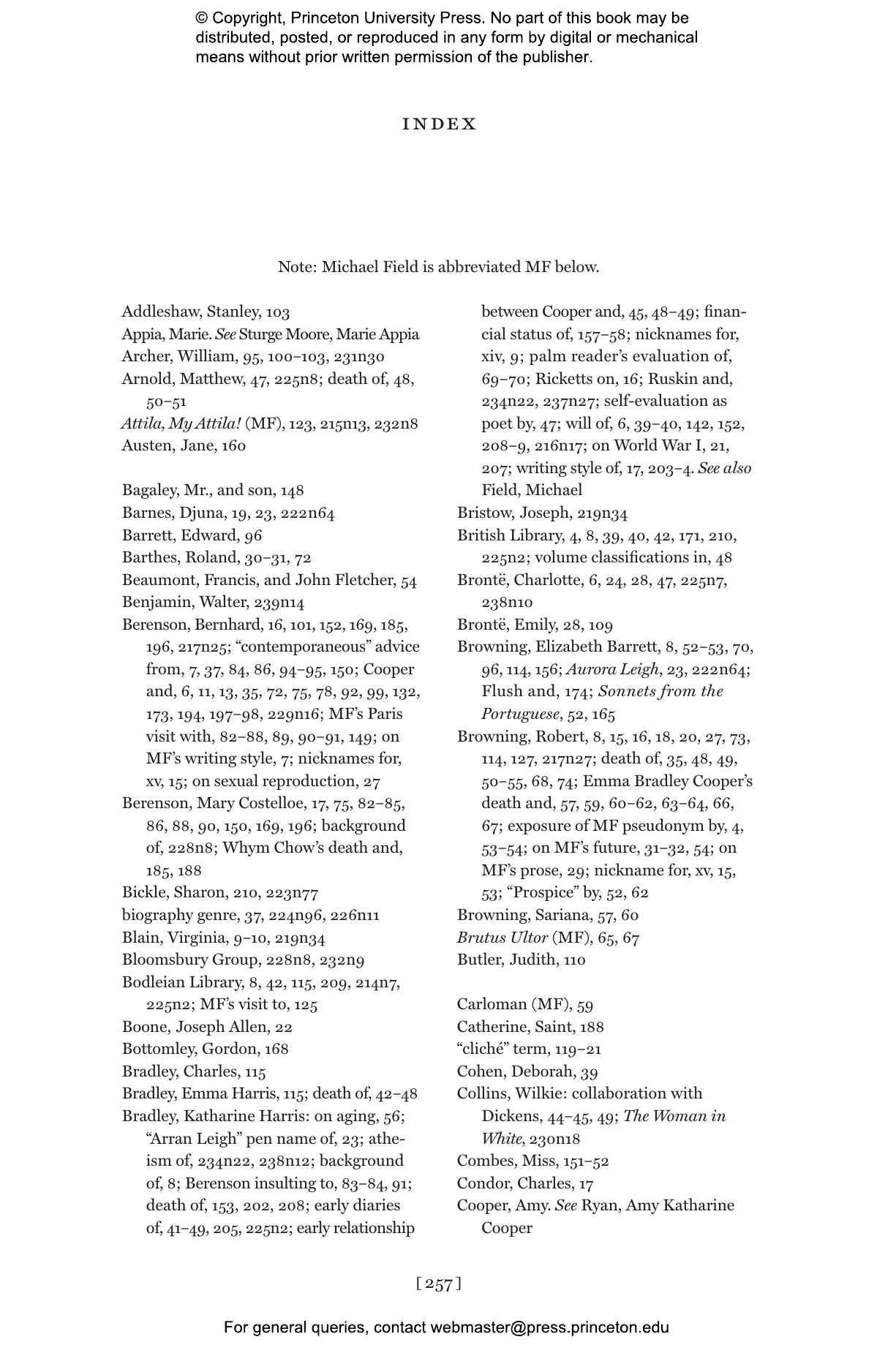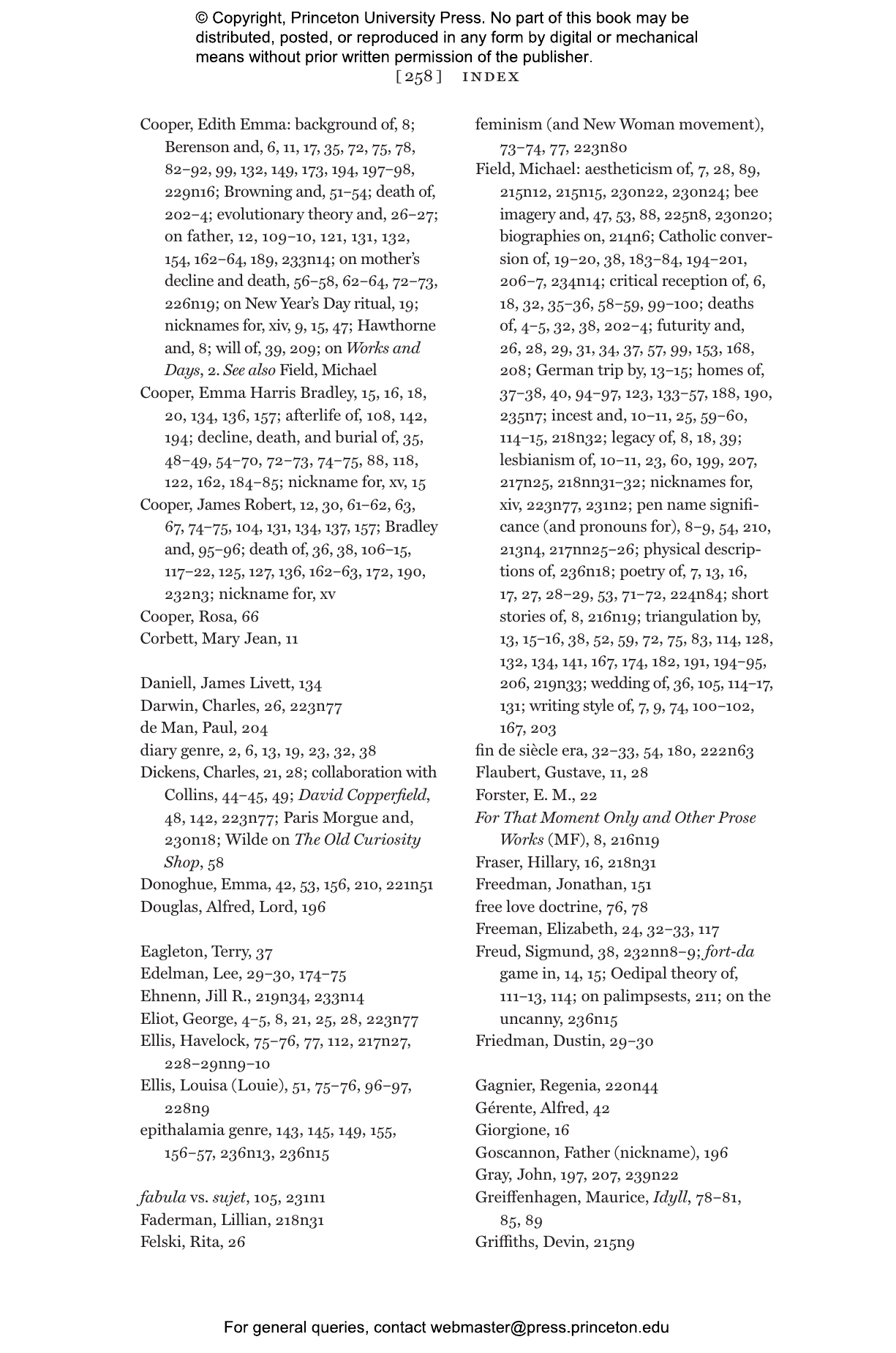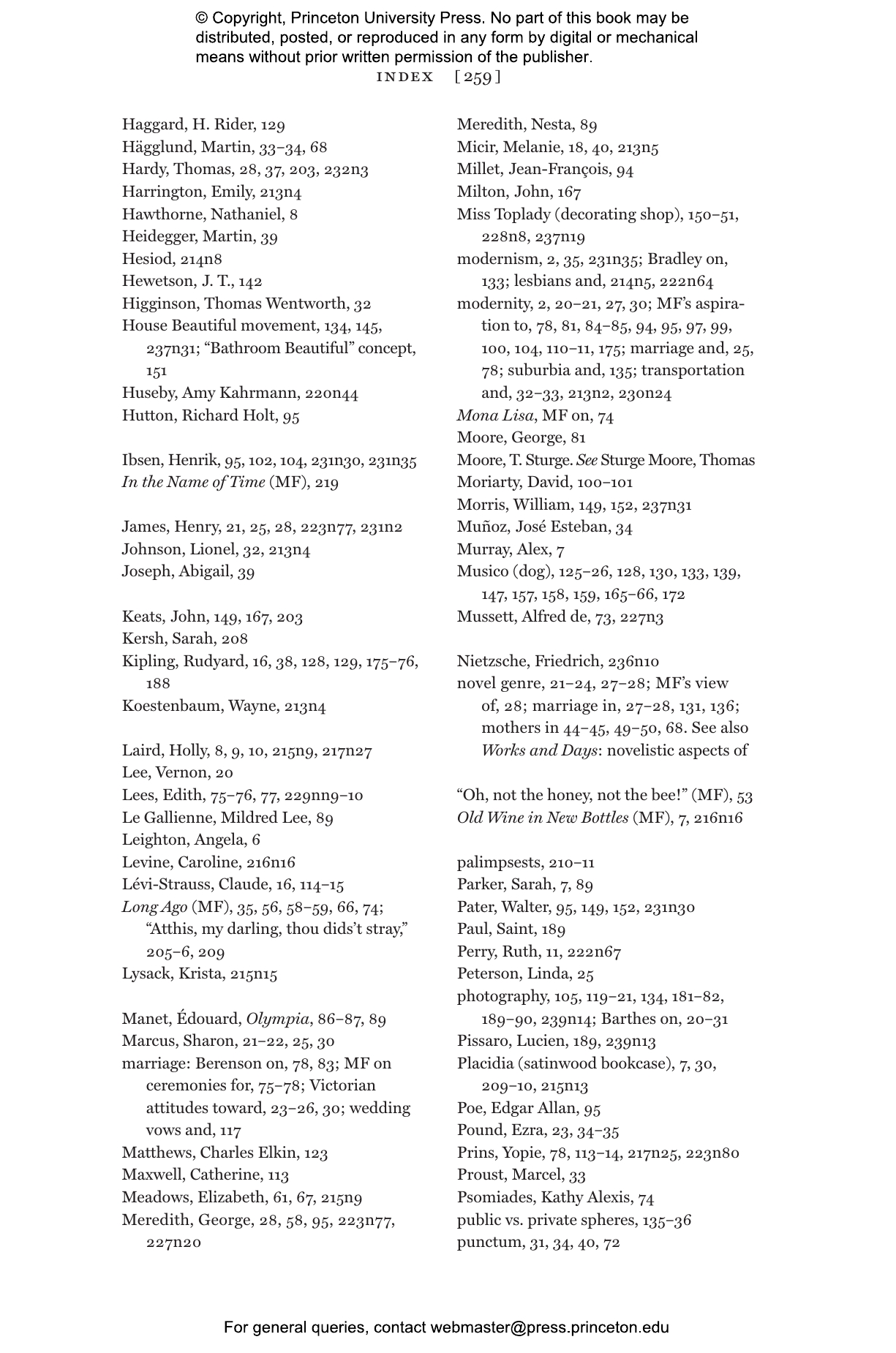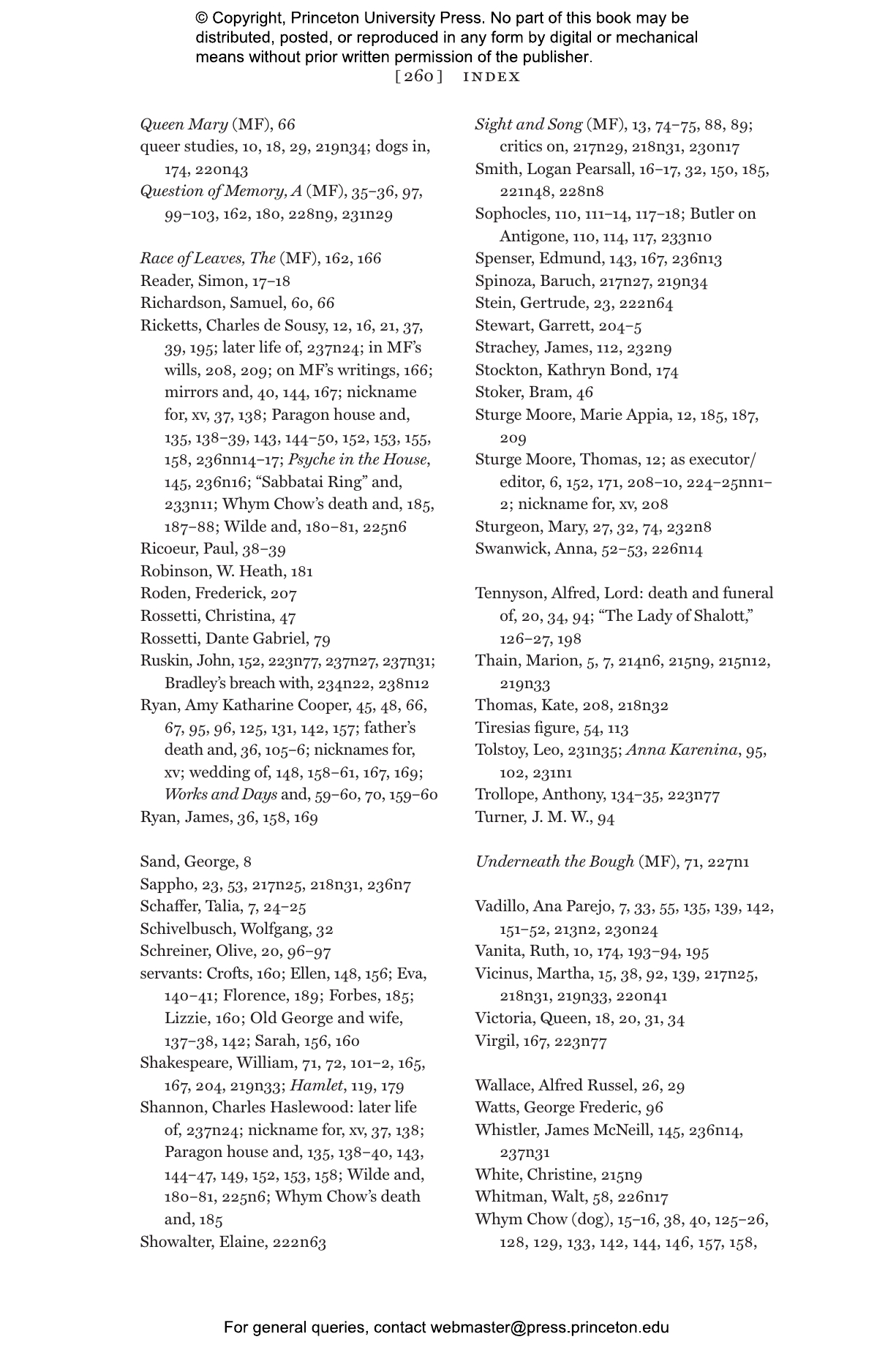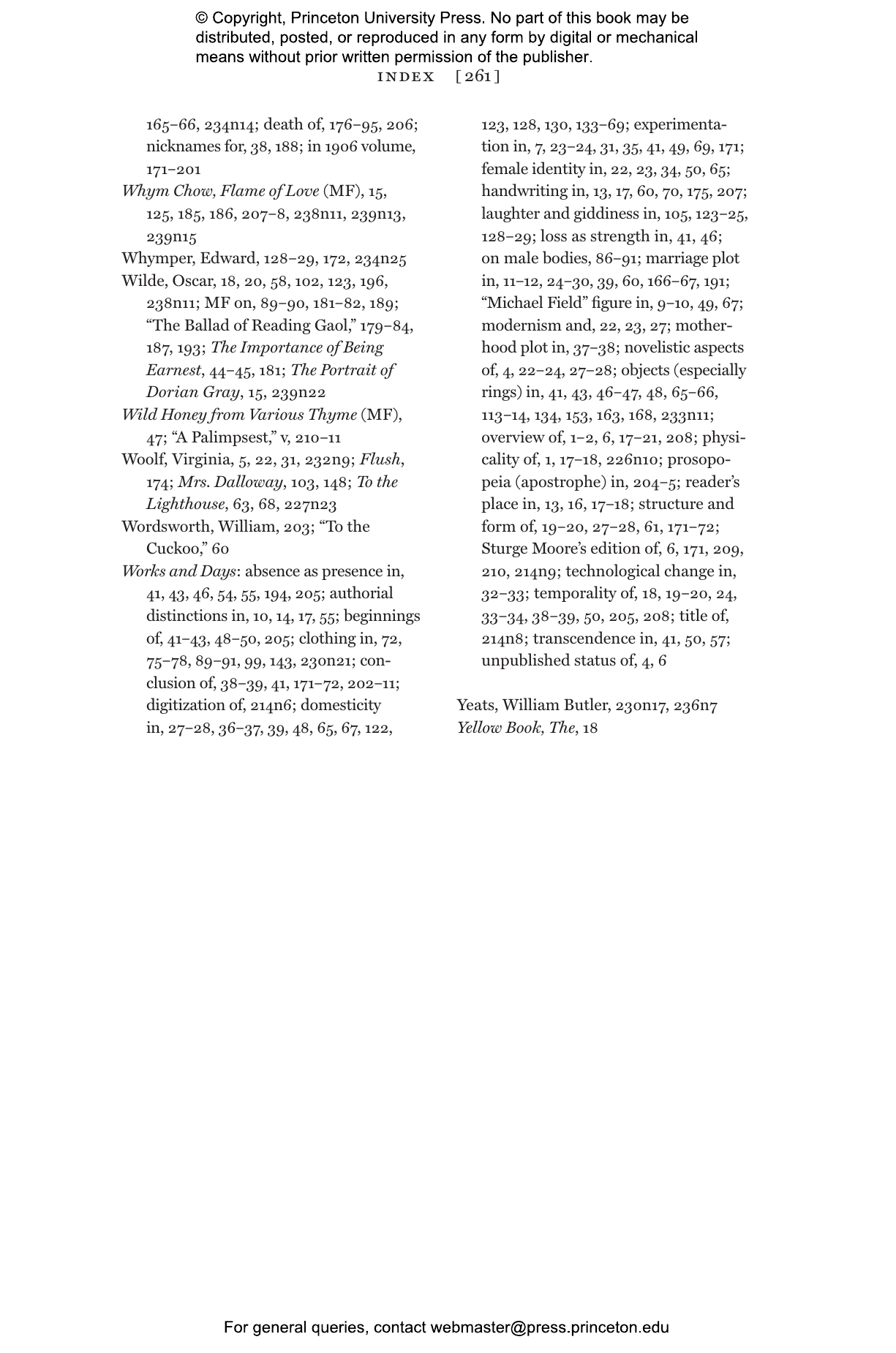Michael Field, the renowned late-Victorian poet, was well known to be the pseudonym of Katharine Bradley (1846–1914) and her niece, Edith Cooper (1862–1913). Less well known is that for three decades, the women privately maintained a romantic relationship and kept a double diary, sharing the page as they shared a bed and eventually producing a 9,500-page, twenty-nine-volume story of love, life, and art in the fin de siècle. In Chains of Love and Beauty, the first book about the diary, Carolyn Dever makes the case for this work as a great unknown “novel” of the nineteenth century and as a bridge between George Eliot and Virginia Woolf, Victorian marriage plot and modernist experimentation.
While Bradley and Cooper remained committed to publishing poetry under a single, male pseudonym, the diary, which they entitled Works and Days and hoped would be published after their deaths, allowed them to realize literary ambitions that were unfulfilled during their lifetime. The women also used the diary, which remains largely unpublished, to negotiate their art, desires, and frustrations, as well as their relationships with contemporary literary celebrities, including Robert Browning, Oscar Wilde, William Butler Yeats, and Walter Pater.
Showing for the first time why Works and Days is a great experimental work of late-Victorian and early modernist writing, one that sheds startling new light on gender, sexuality, and authorship, Dever reveals how Bradley and Cooper wrote their shared life as art, and their art as life, on pages of intimacy that they wanted to share with the world.
Carolyn Dever is professor of English and creative writing at Dartmouth College. Her books include Skeptical Feminism and Death and the Mother from Dickens to Freud. Twitter @carolyndever
"Faced with Michael Field’s vast and extraordinary output, of prose, poems and plays, selections such as the ones offered in [Chains of Love and Beauty] certainly lend the reader a welcome 'pair – of – scissors.'"—Angela Leighton, Times Literary Supplement
"In Chains of Love and Beauty: The Diary of Michael Field . . . scholar Carolyn Dever pulls that diary out of a century of obscurity and unfurls 30 years and almost 10,000 pages to reveal a genre-defying, protomodernist document."—Evangeline Riddiford Graham, Los Angeles Review of Books
"Dever’s analysis provides a gateway into the volumes of Works and Days that have been sitting in British Library storage for the better part of one hundred years."—Megan Williams, British Association for Victorian Studies Newsletter
“Carolyn Dever’s groundbreaking book makes accessible Michael Field’s passionate examination of art, beauty, ambition, feminism—and everyday life. In a series of incisive readings, she unlocks their formal experiments in writing and reading, as well as their lifelong struggle against heterosexual norms. Beautifully written and argued, Chains of Love and Beauty will change how we think about creative writing, queer studies, and artistic norms. A fabulous read for scholars, students, and the curious!”—Martha Vicinus, author of Intimate Friends: Women Who Loved Women, 1778–1928
“The first proper study of Michael Field’s diary, Carolyn Dever’s extraordinary book is a page-turner and a revelation that enables us to read this work in a whole new way. Dever’s genius lies in her powerful translation of the diary into a novel about marriage and love. Her writing is absolutely riveting, her approach utterly ingenious.”—Ana Parejo Vadillo, Birkbeck, University of London
“Offering an inventive new way of approaching Michael Field’s diary, Carolyn Dever’s engaging and supremely accessible book lets the work breathe and speak for itself, giving equal room to its brilliance and eccentricity.”—Kate Thomas, Bryn Mawr College
